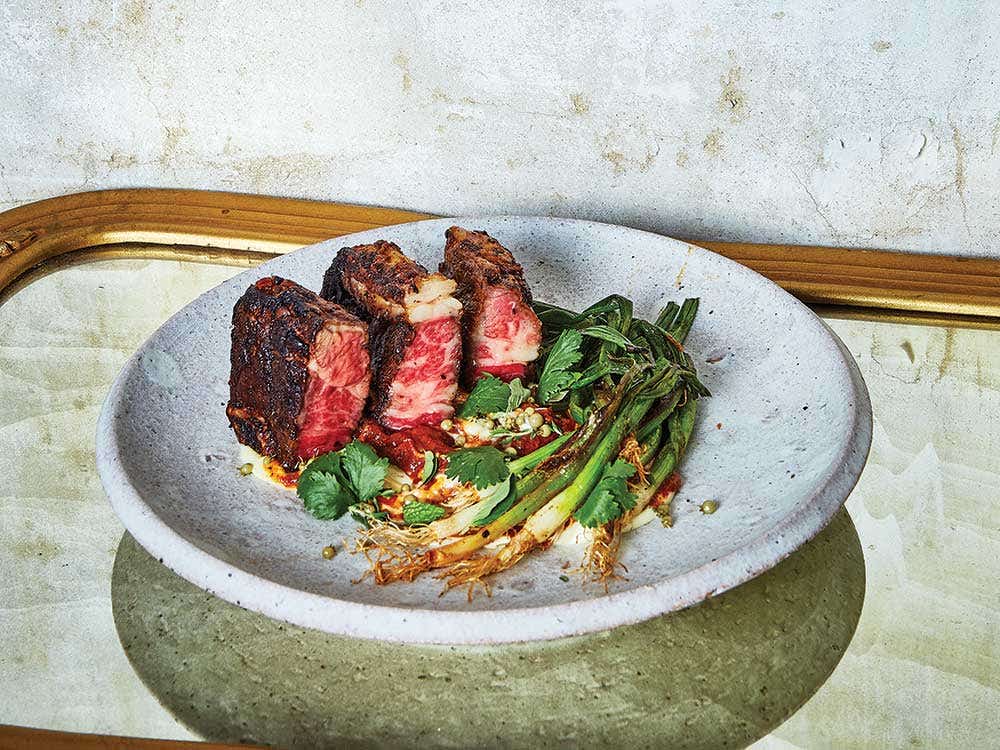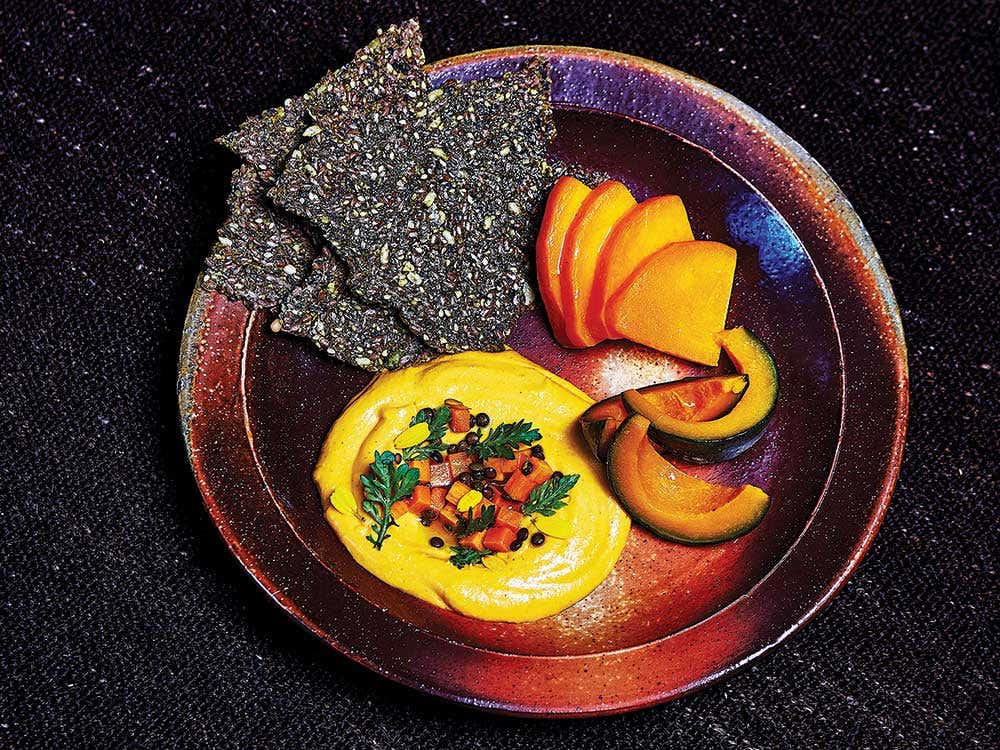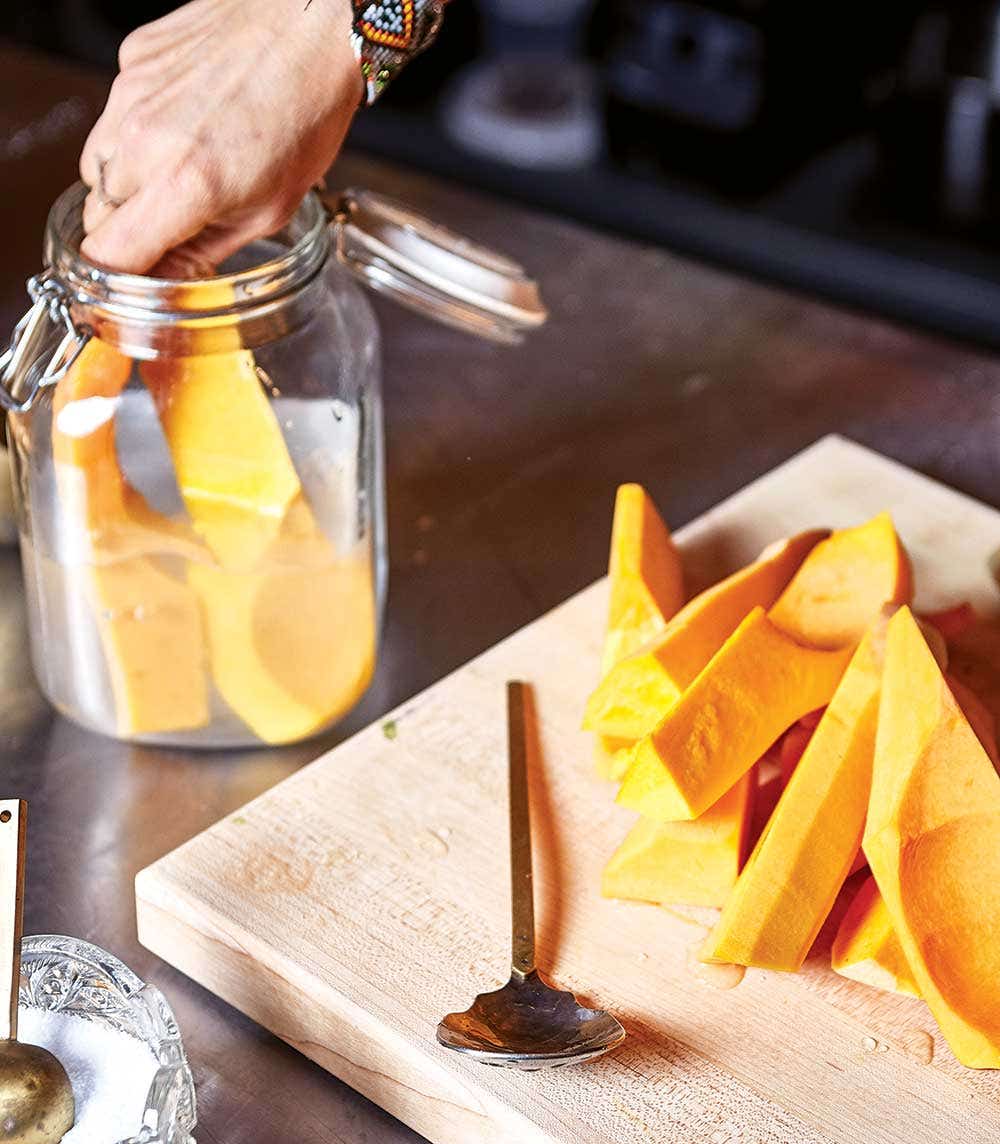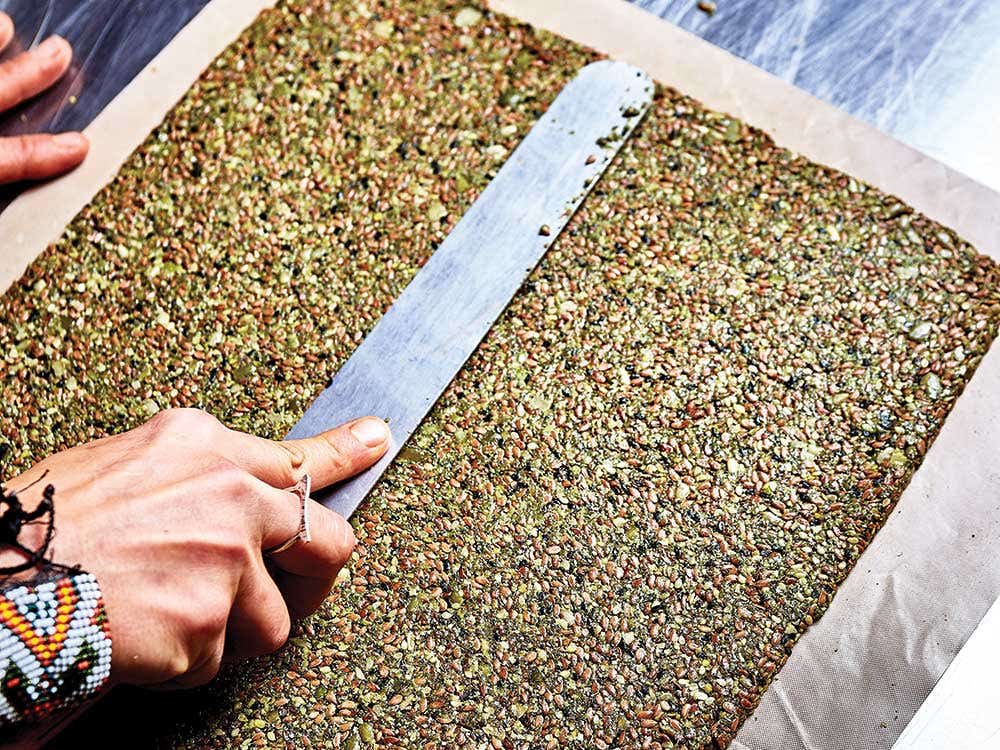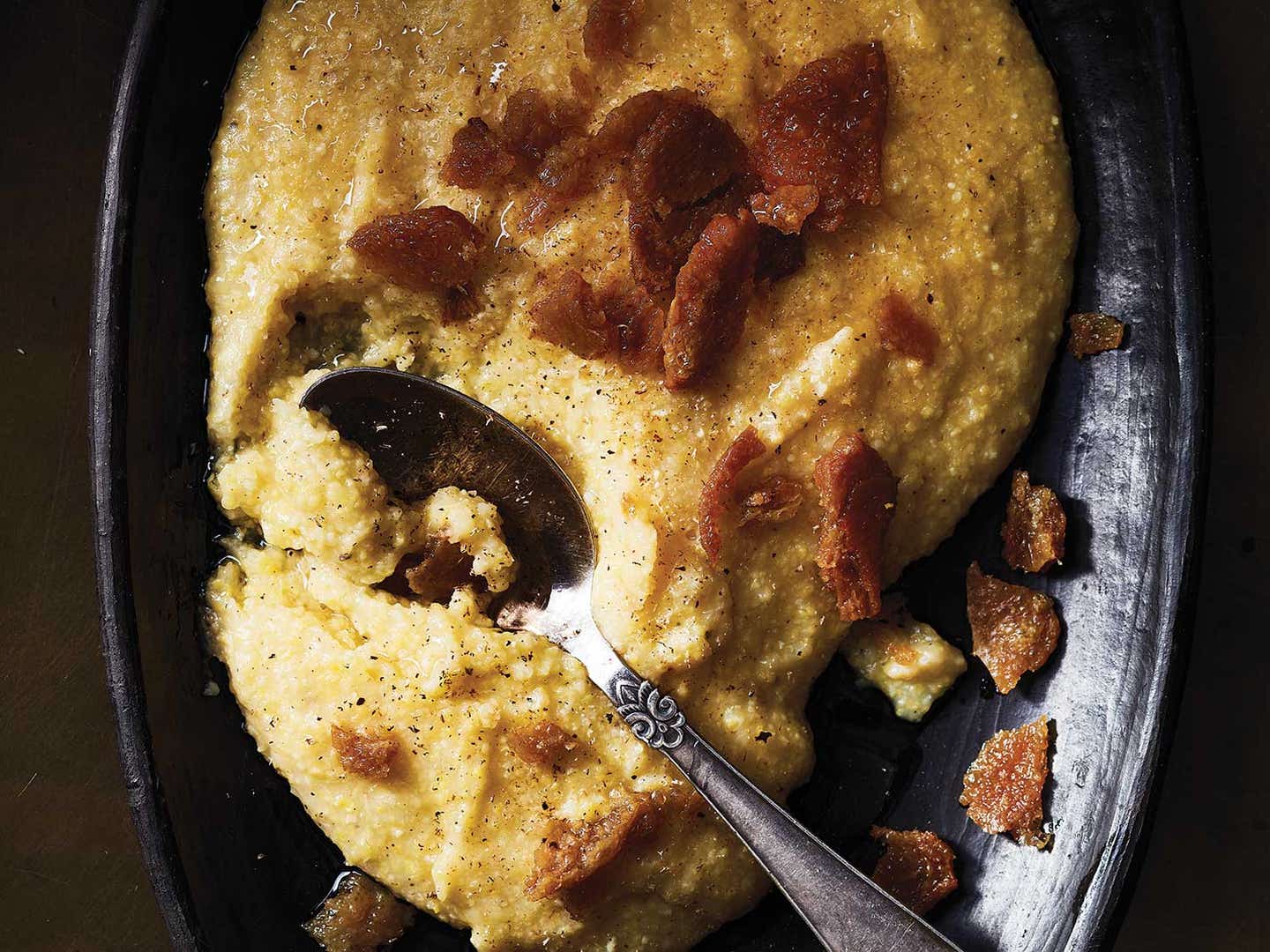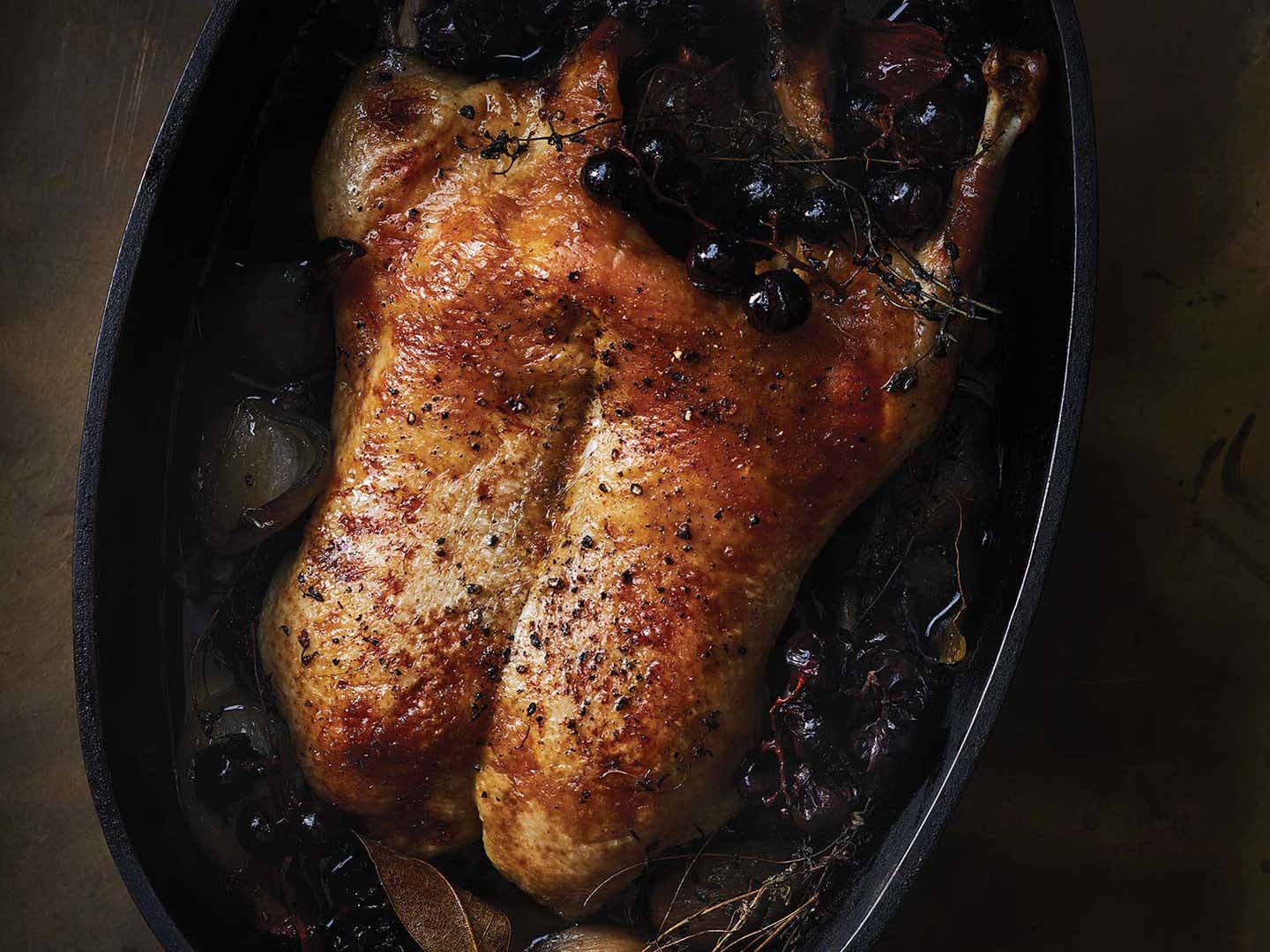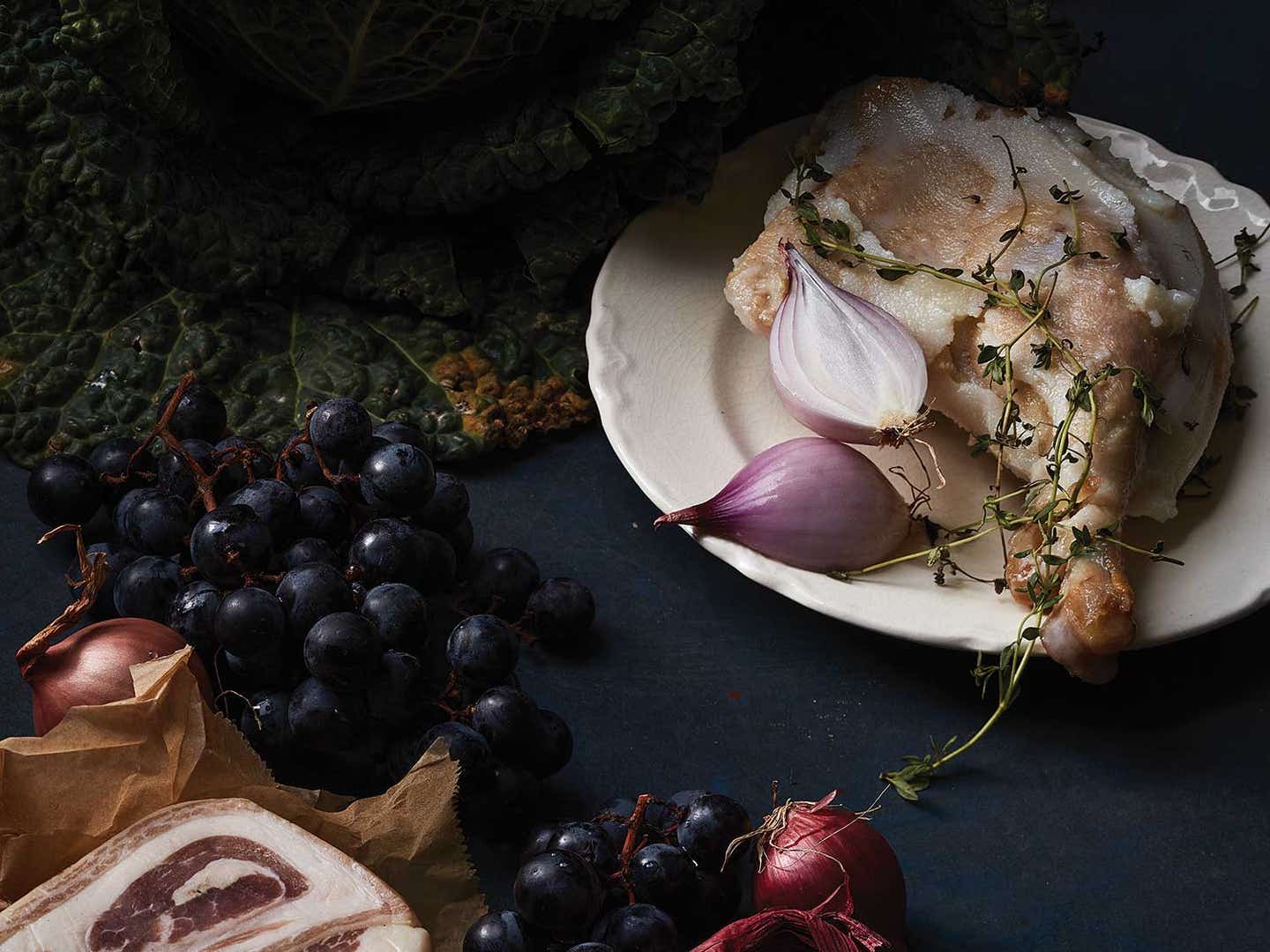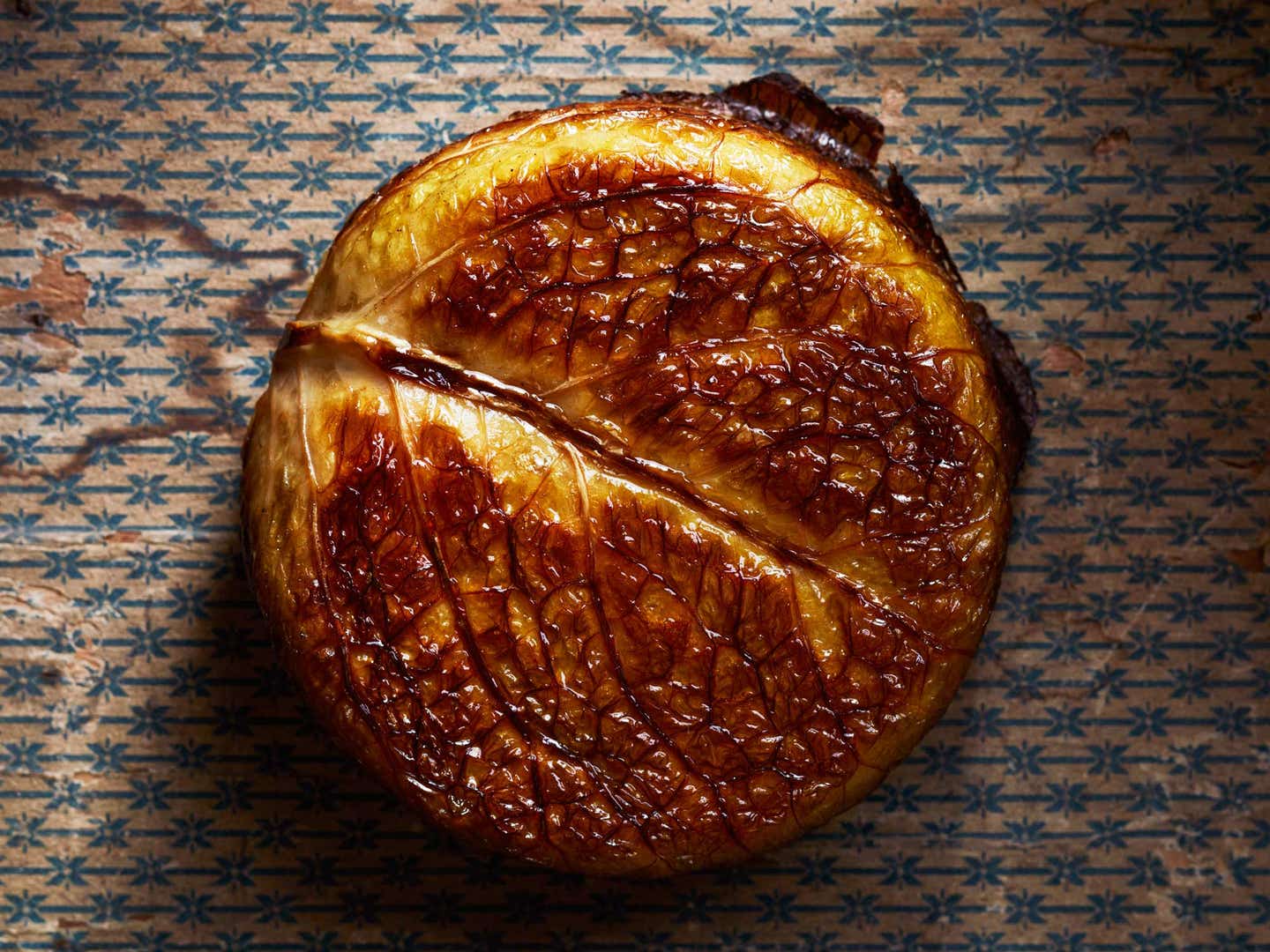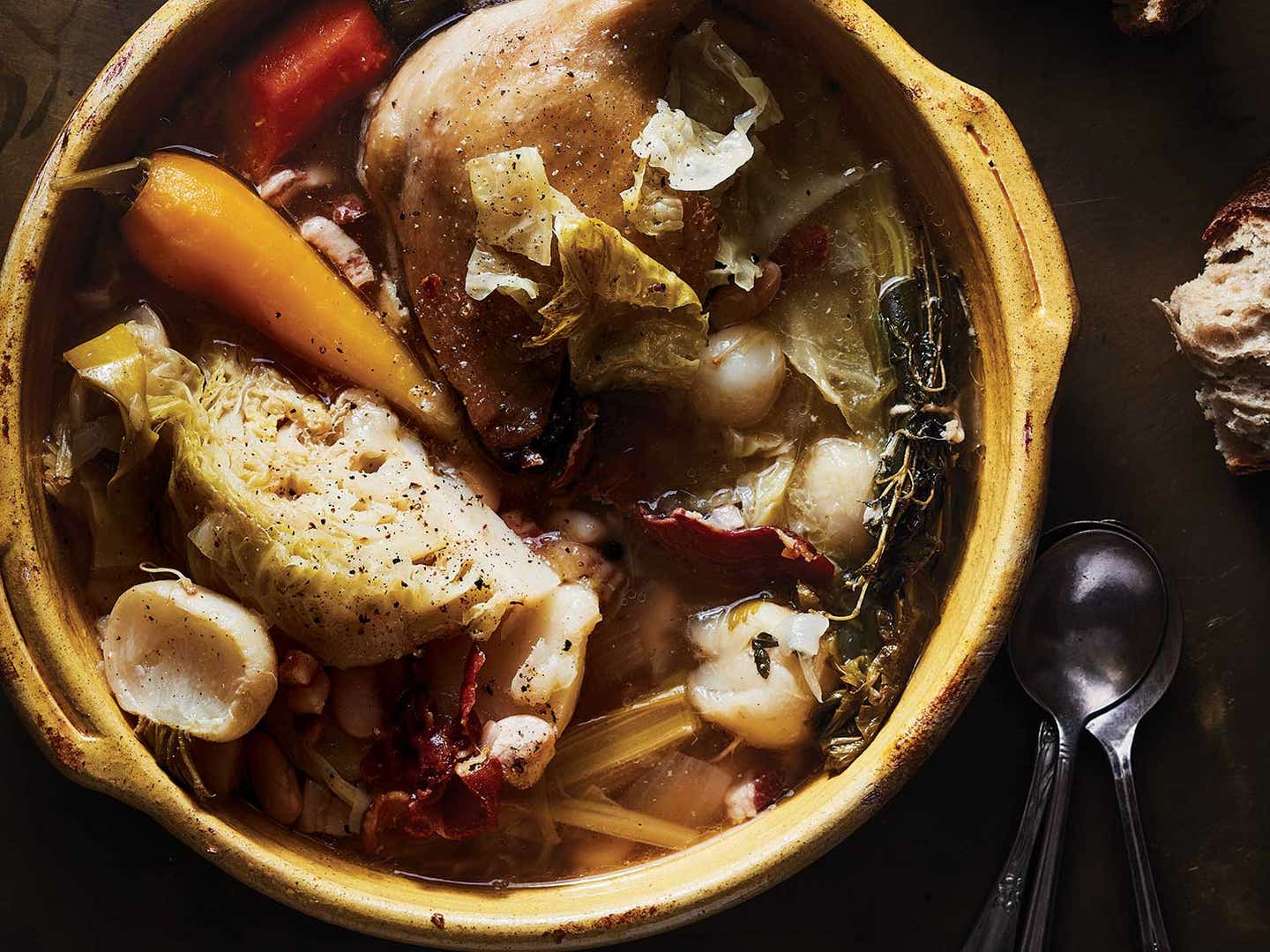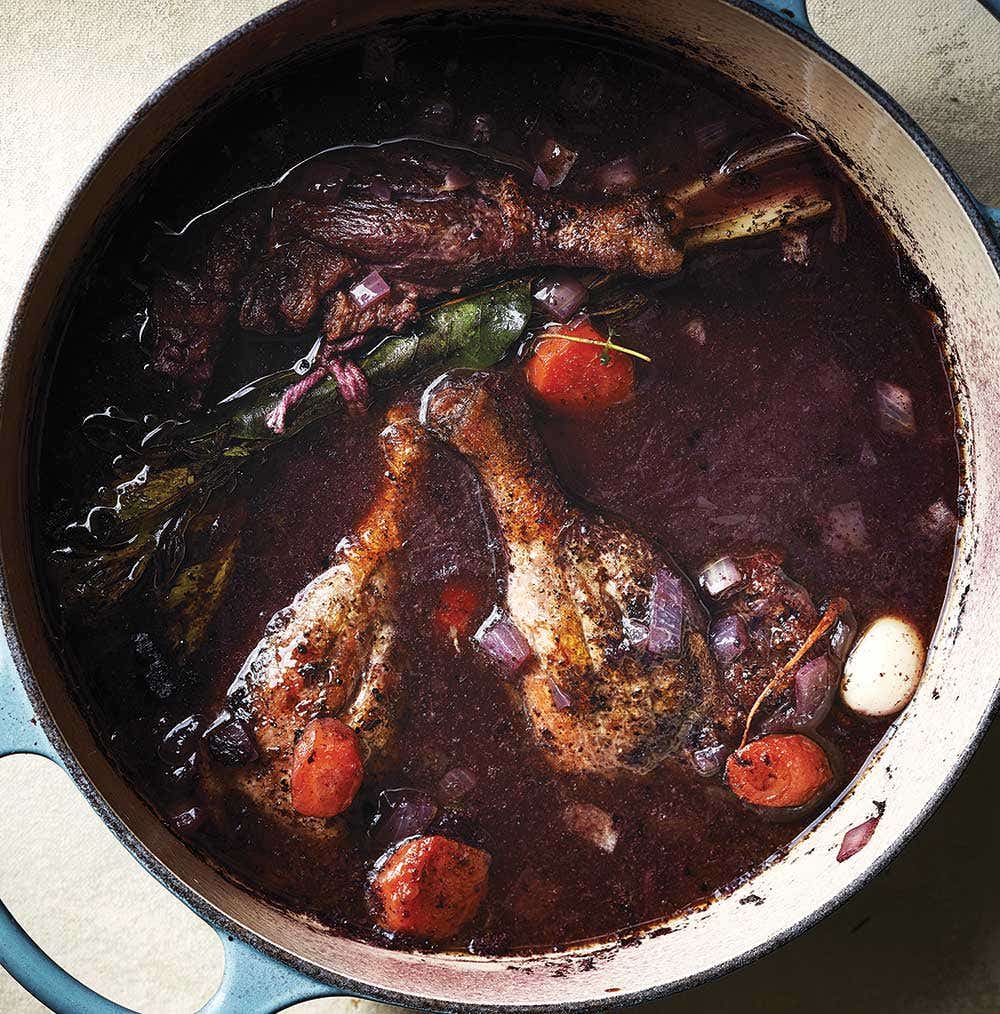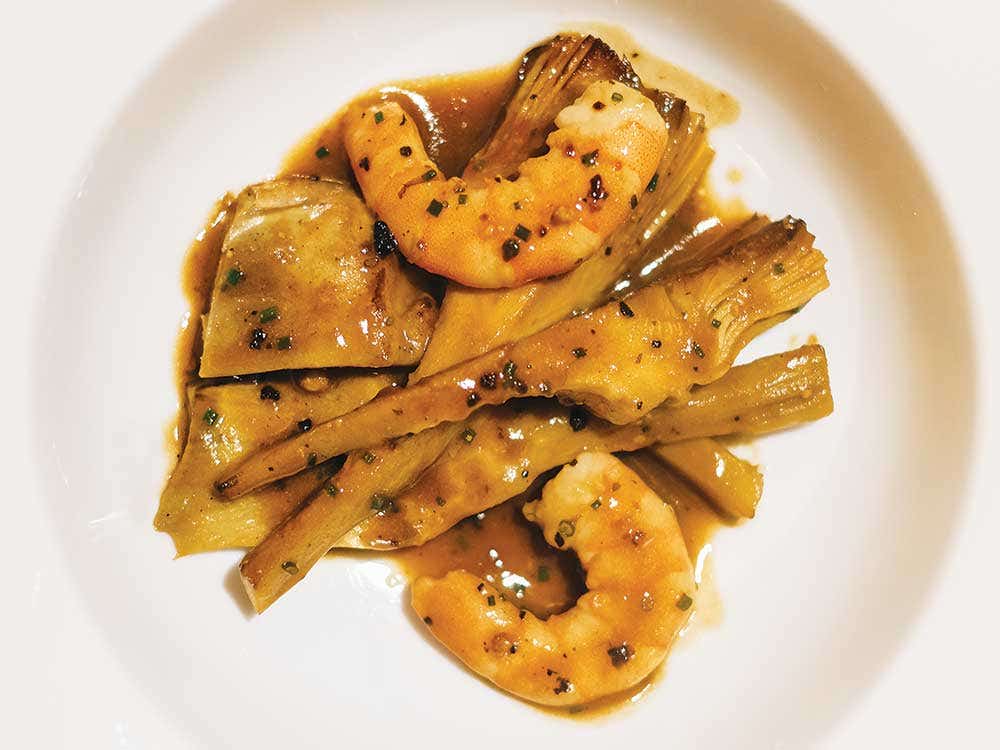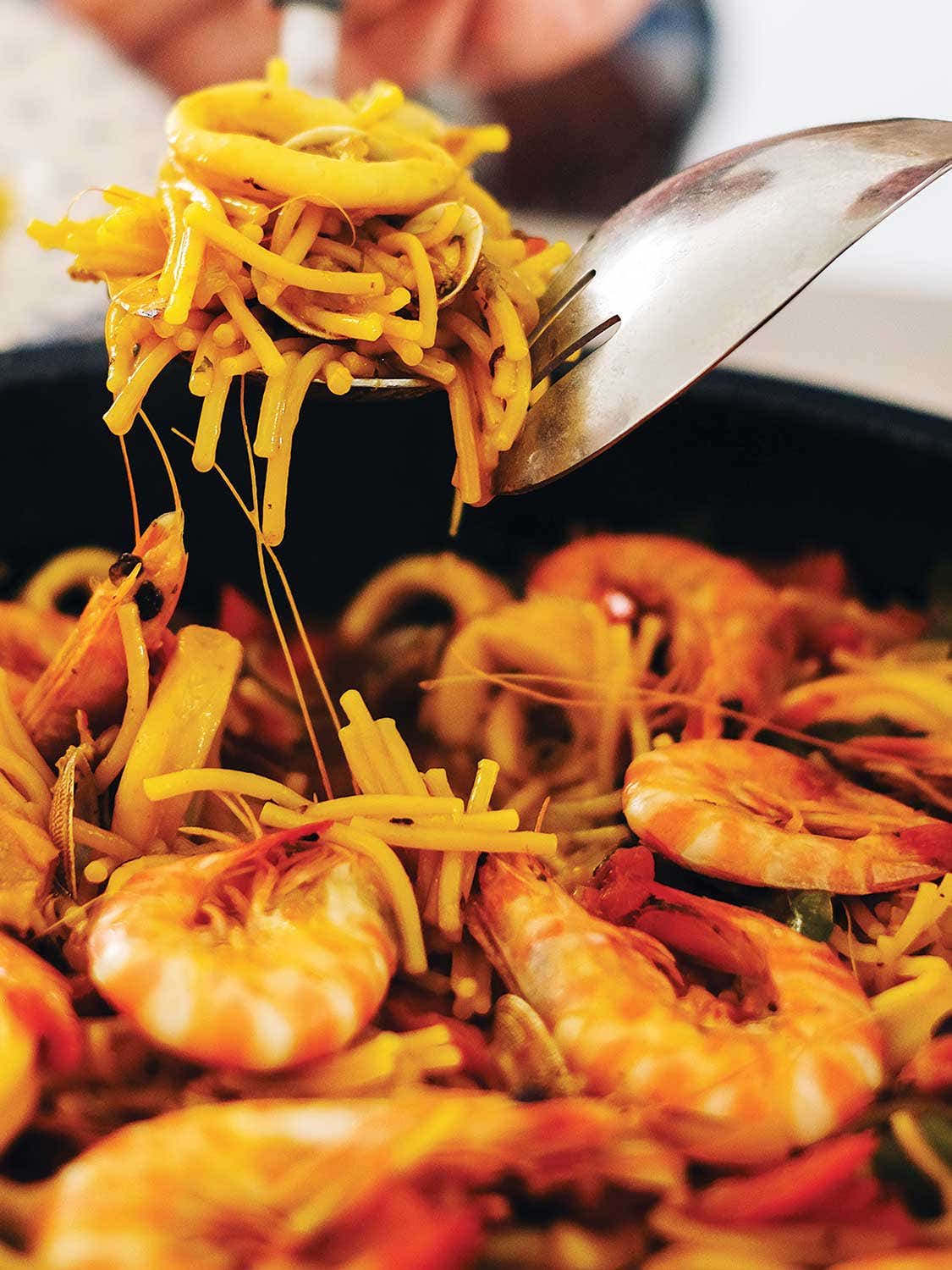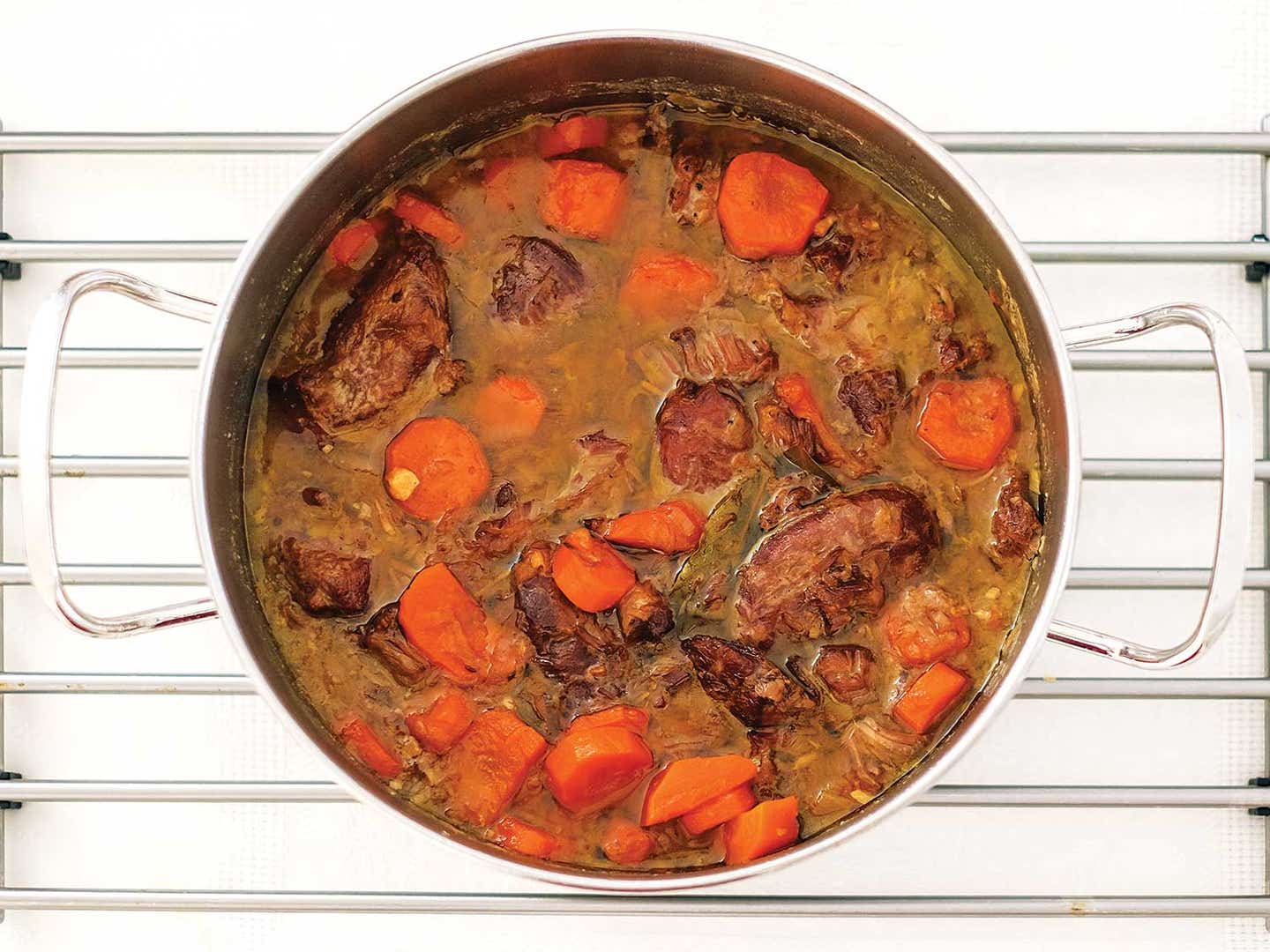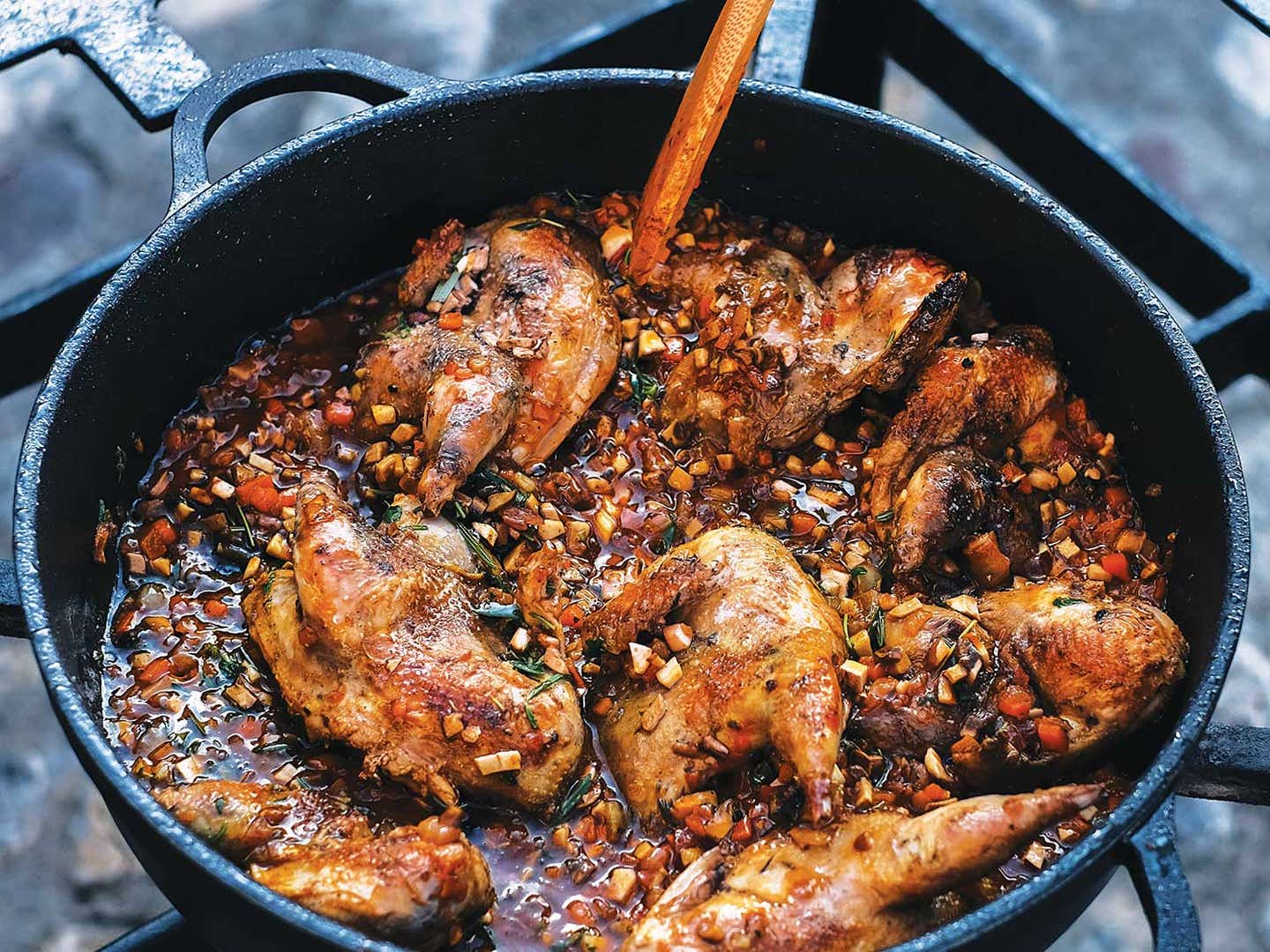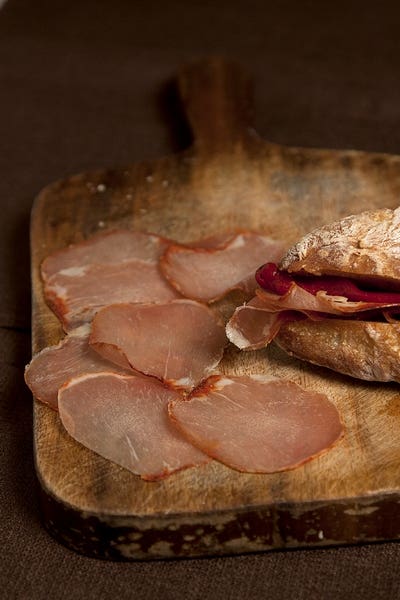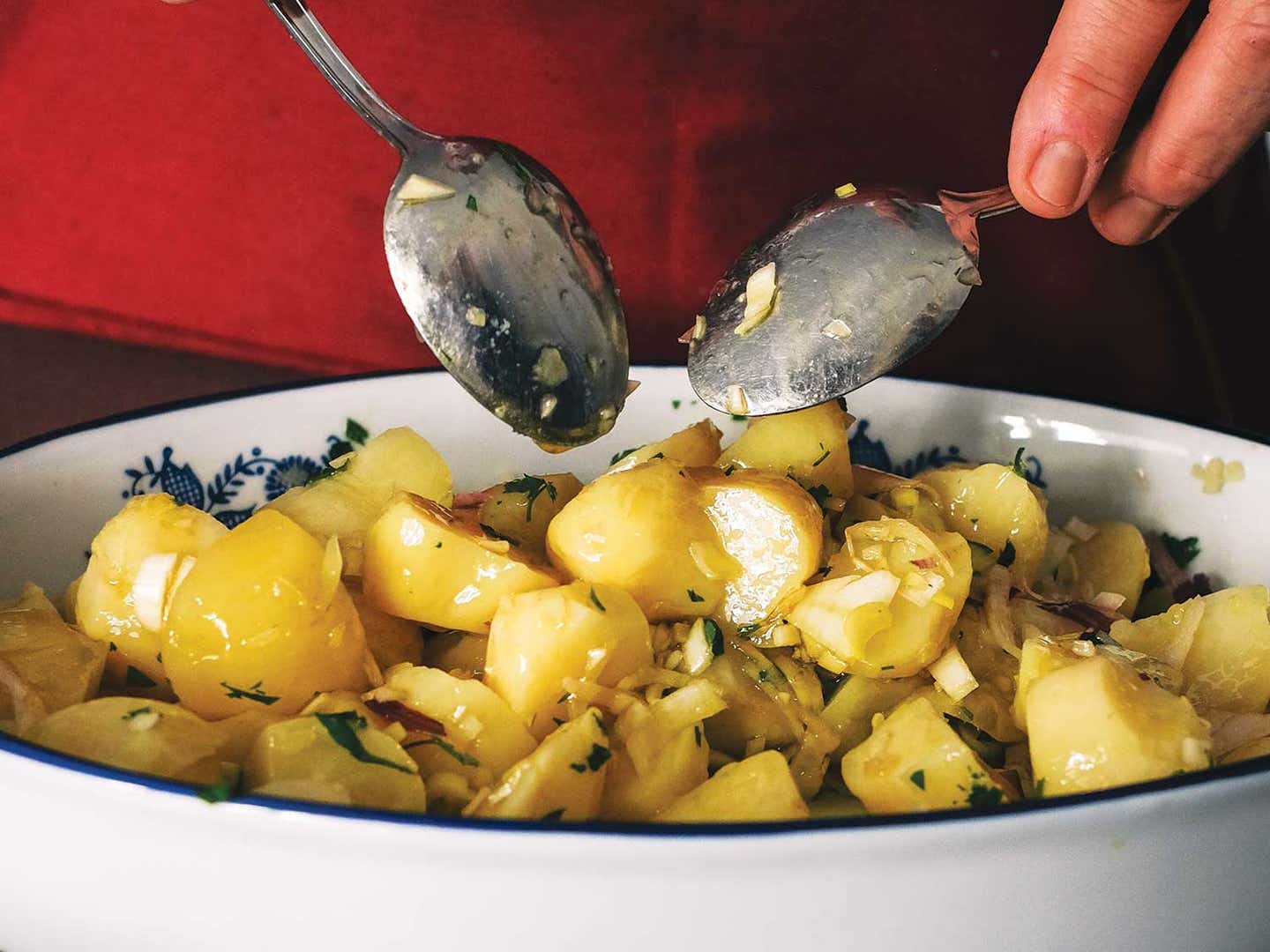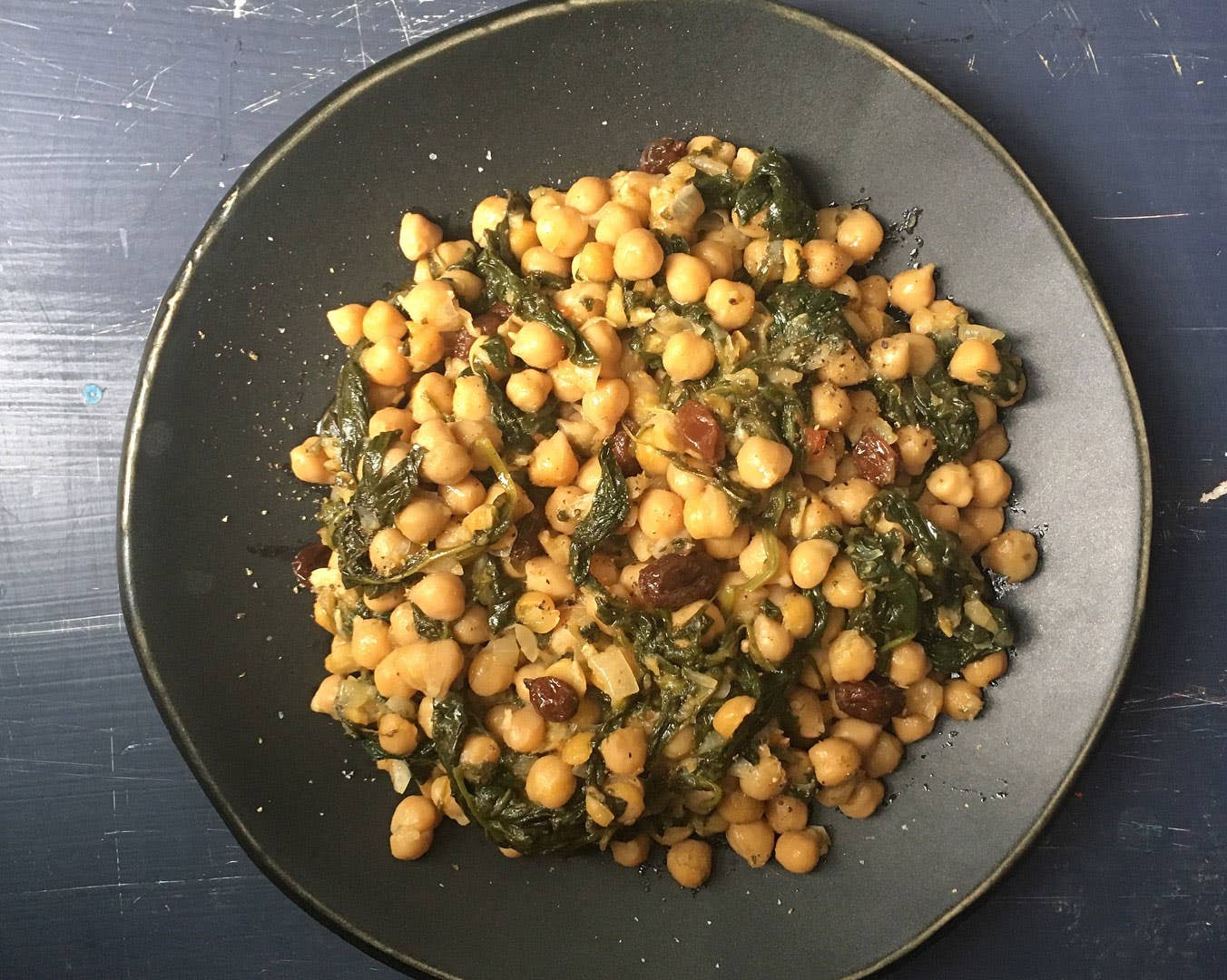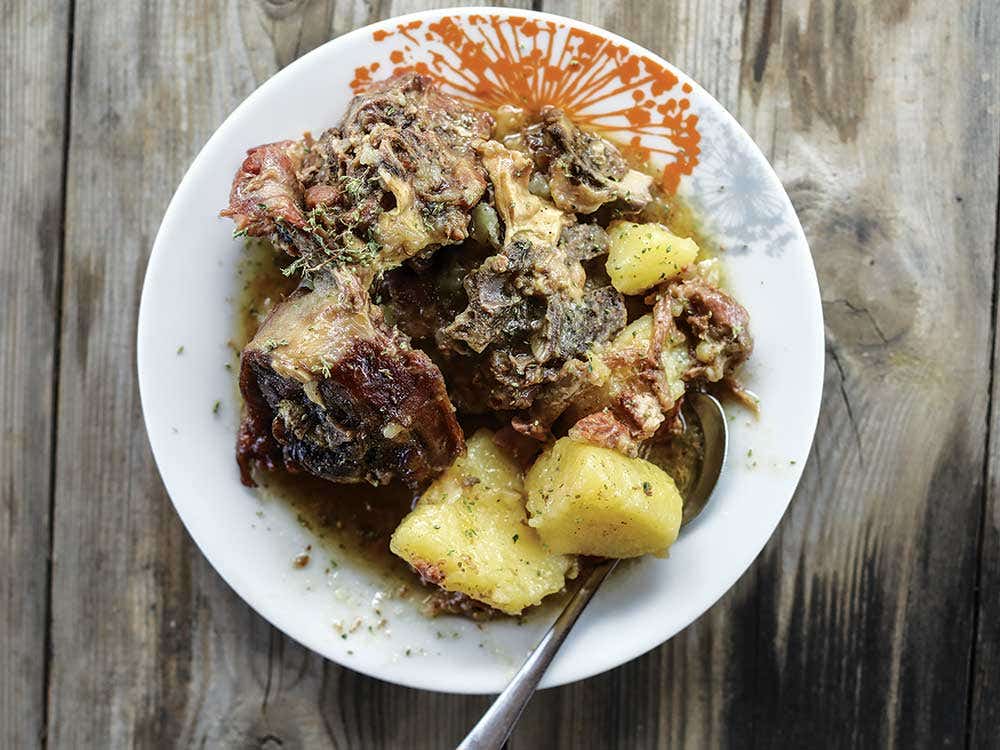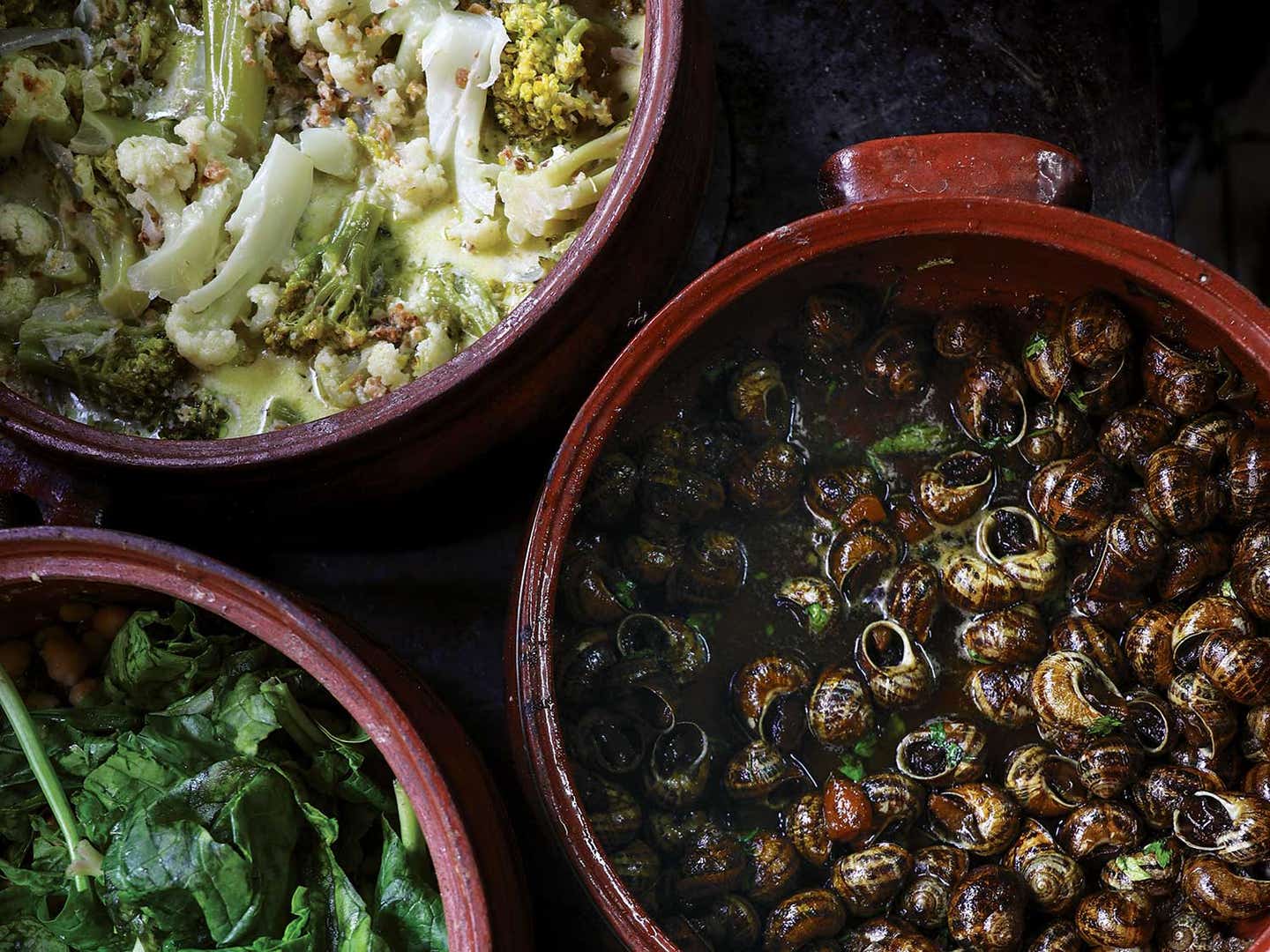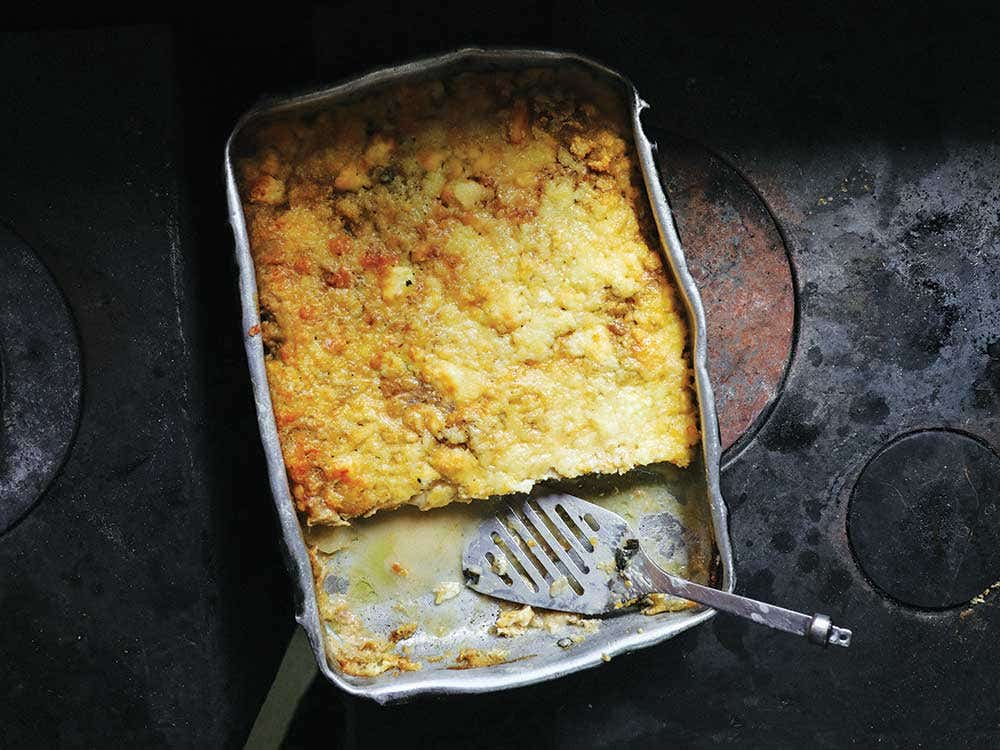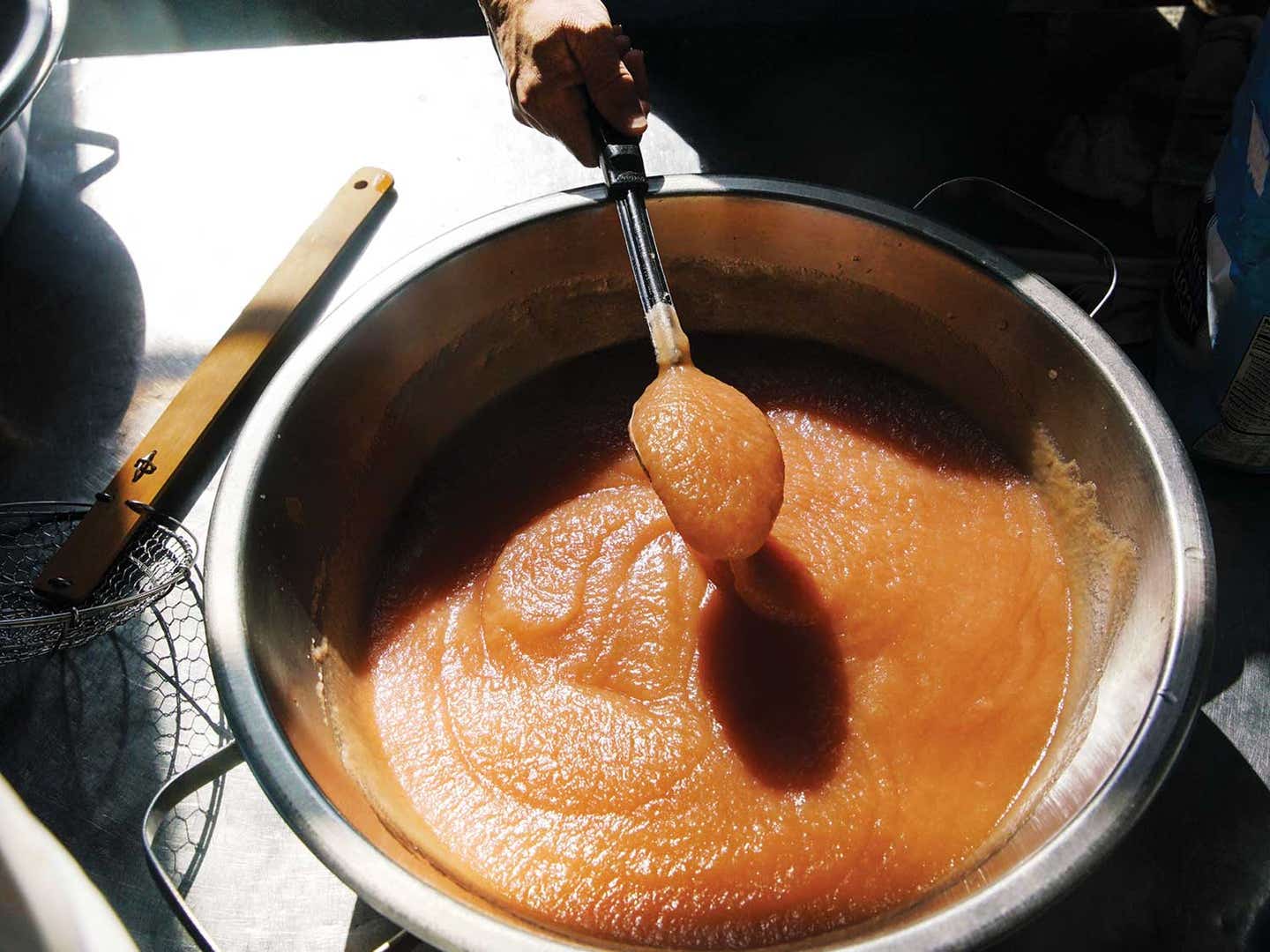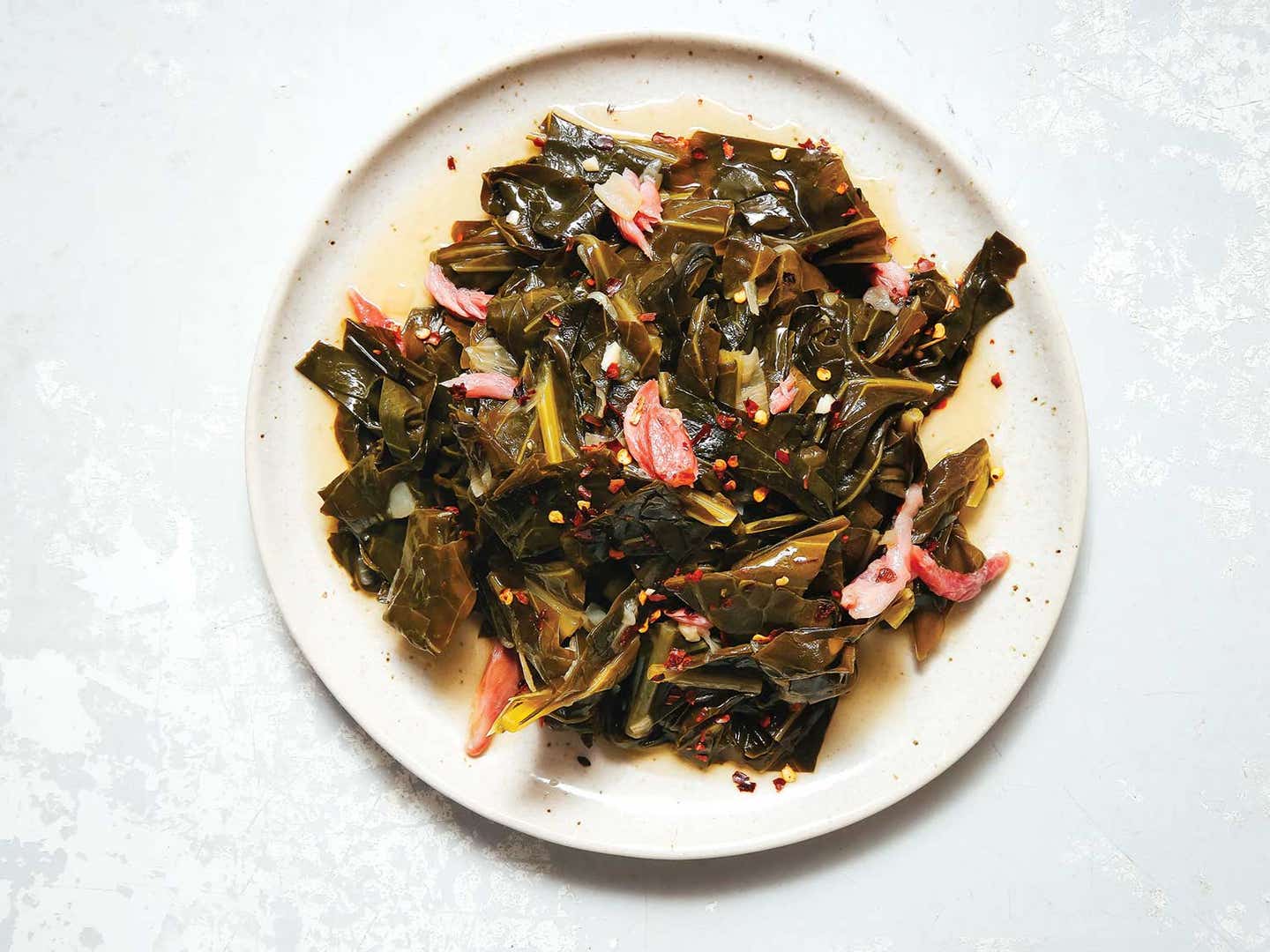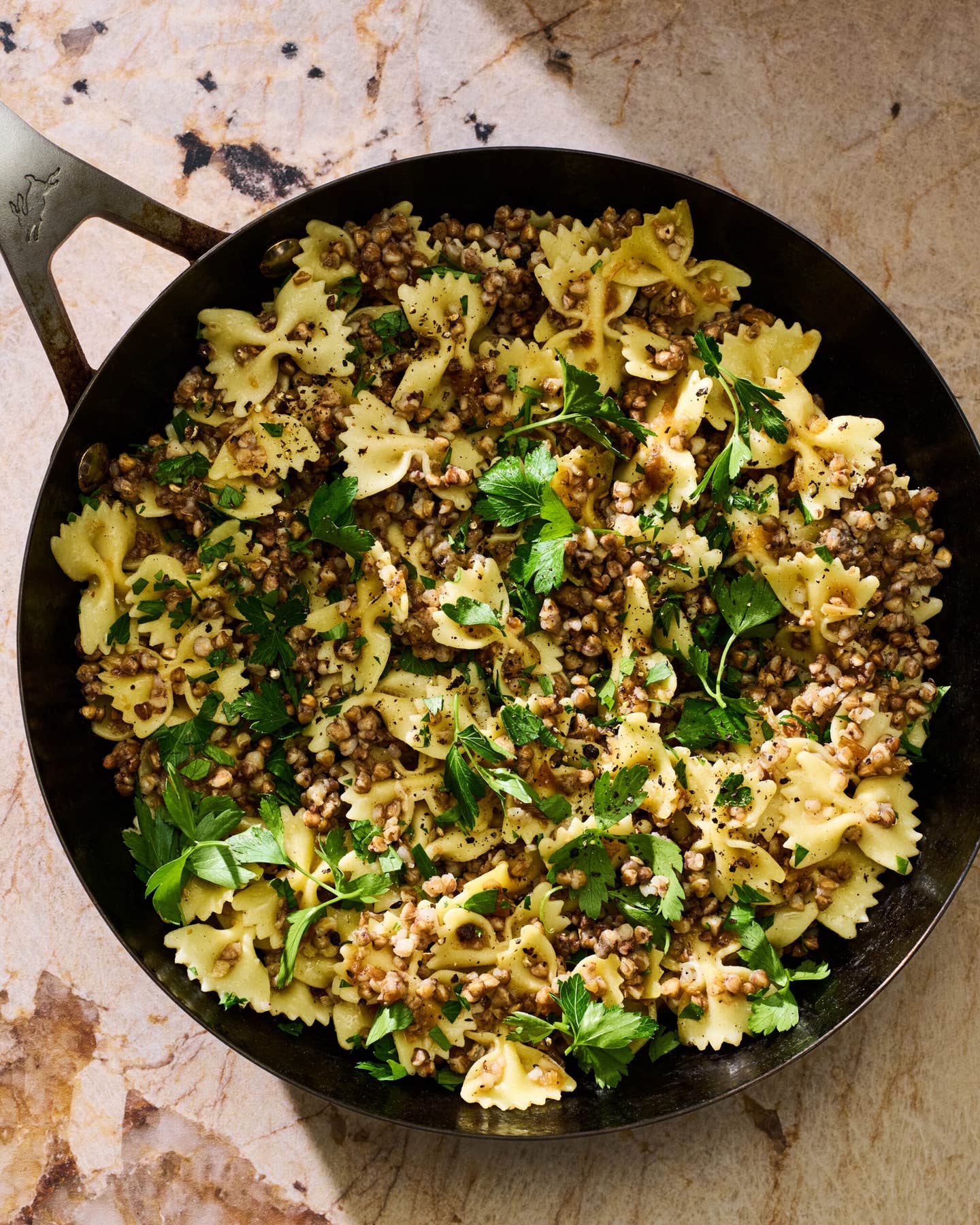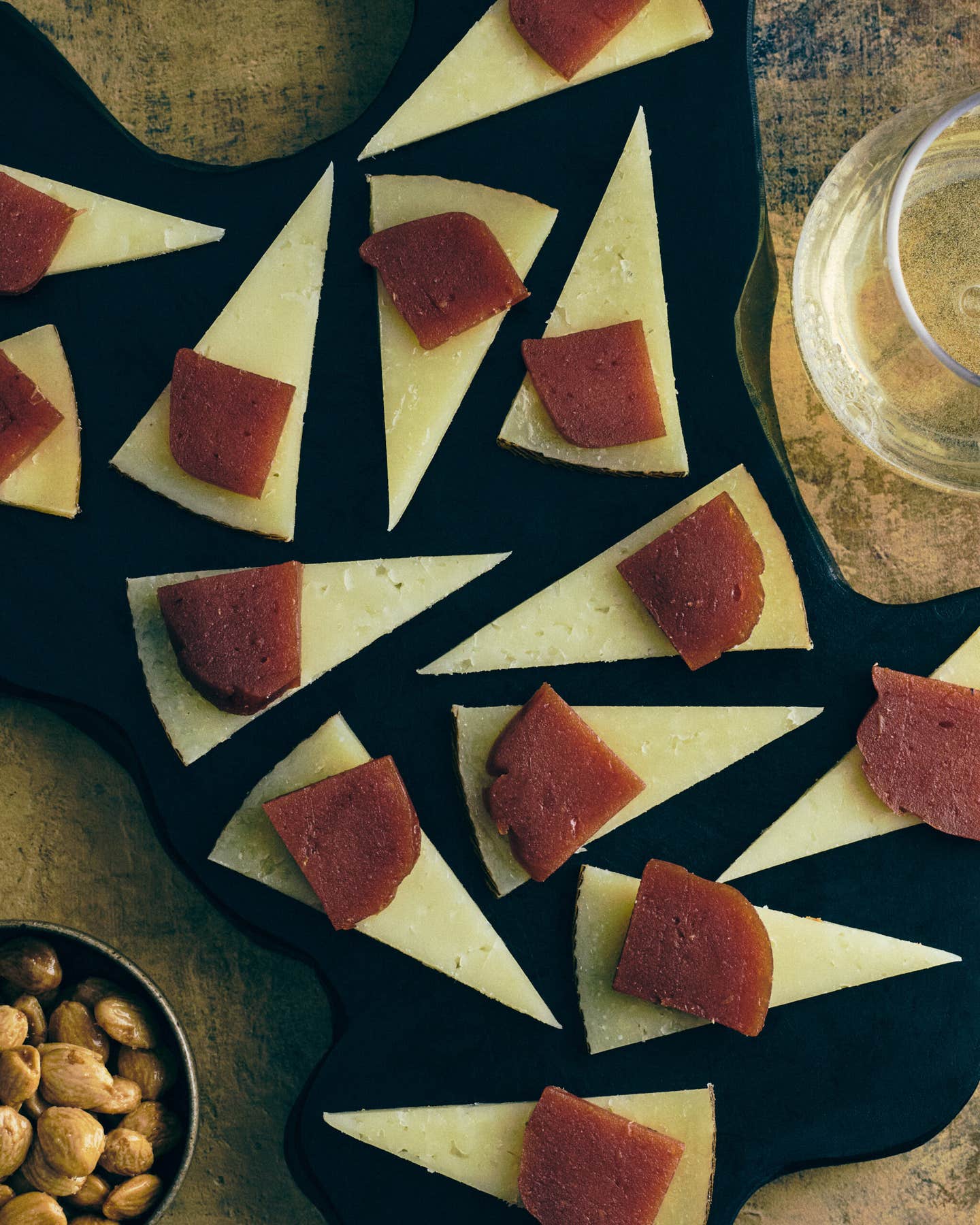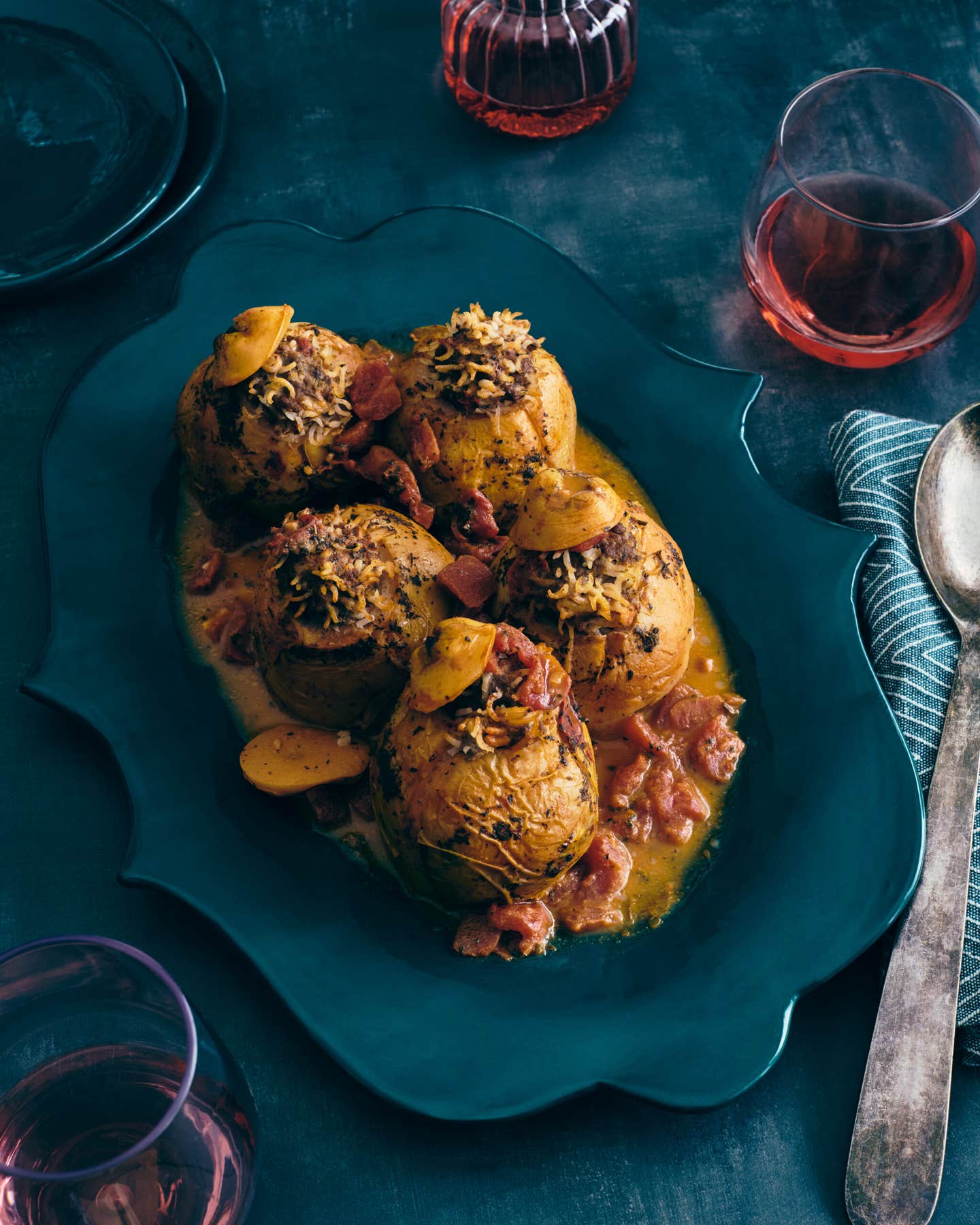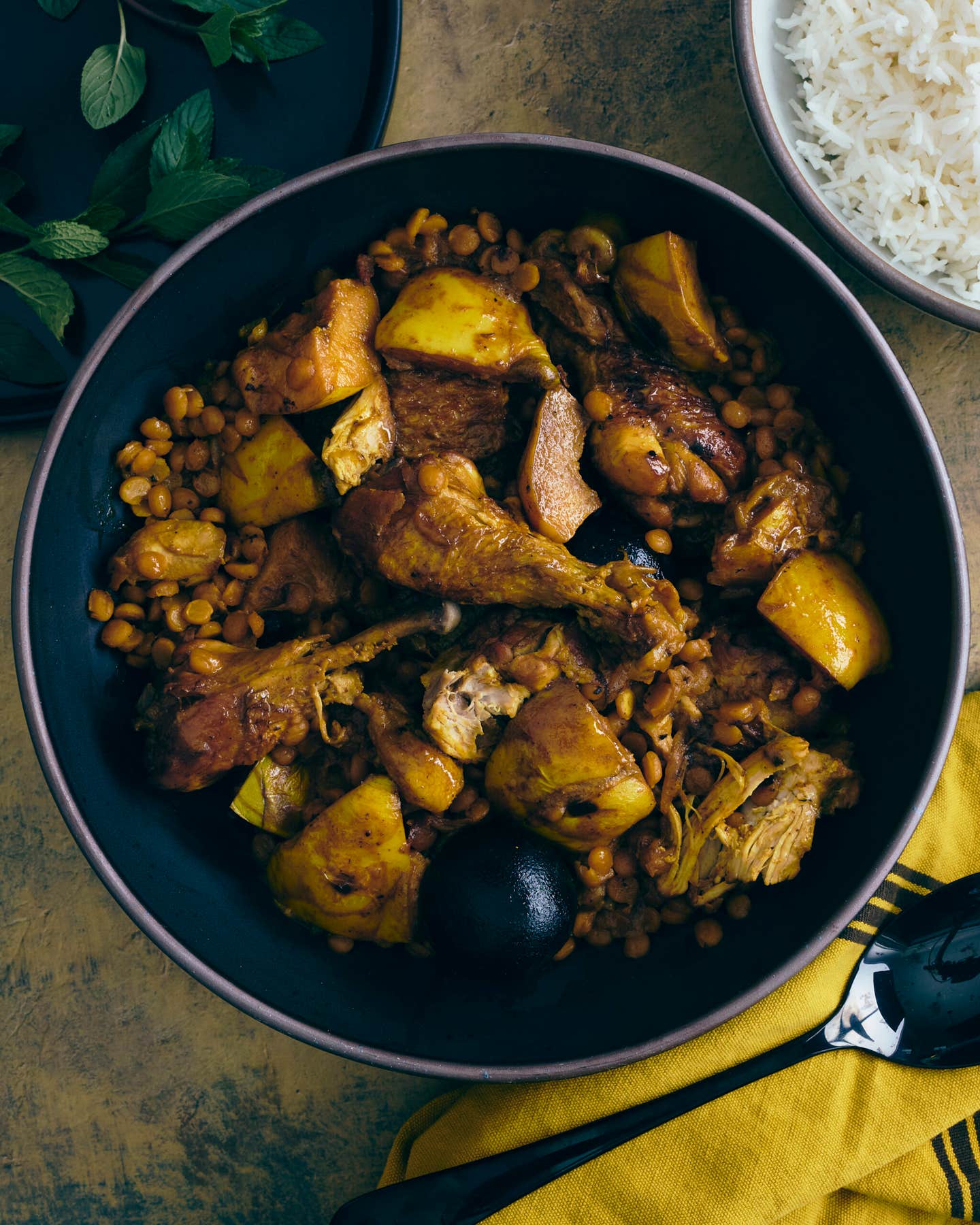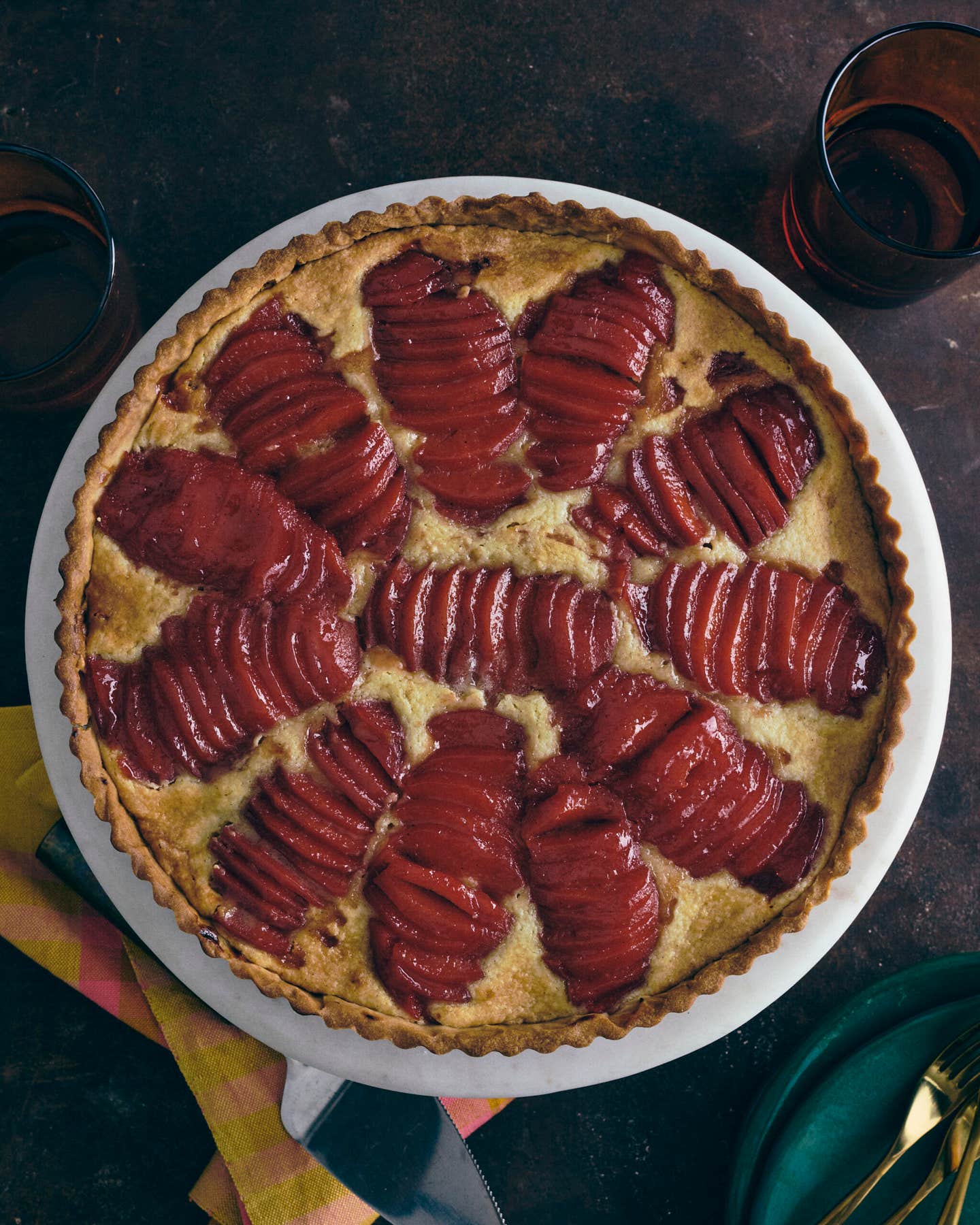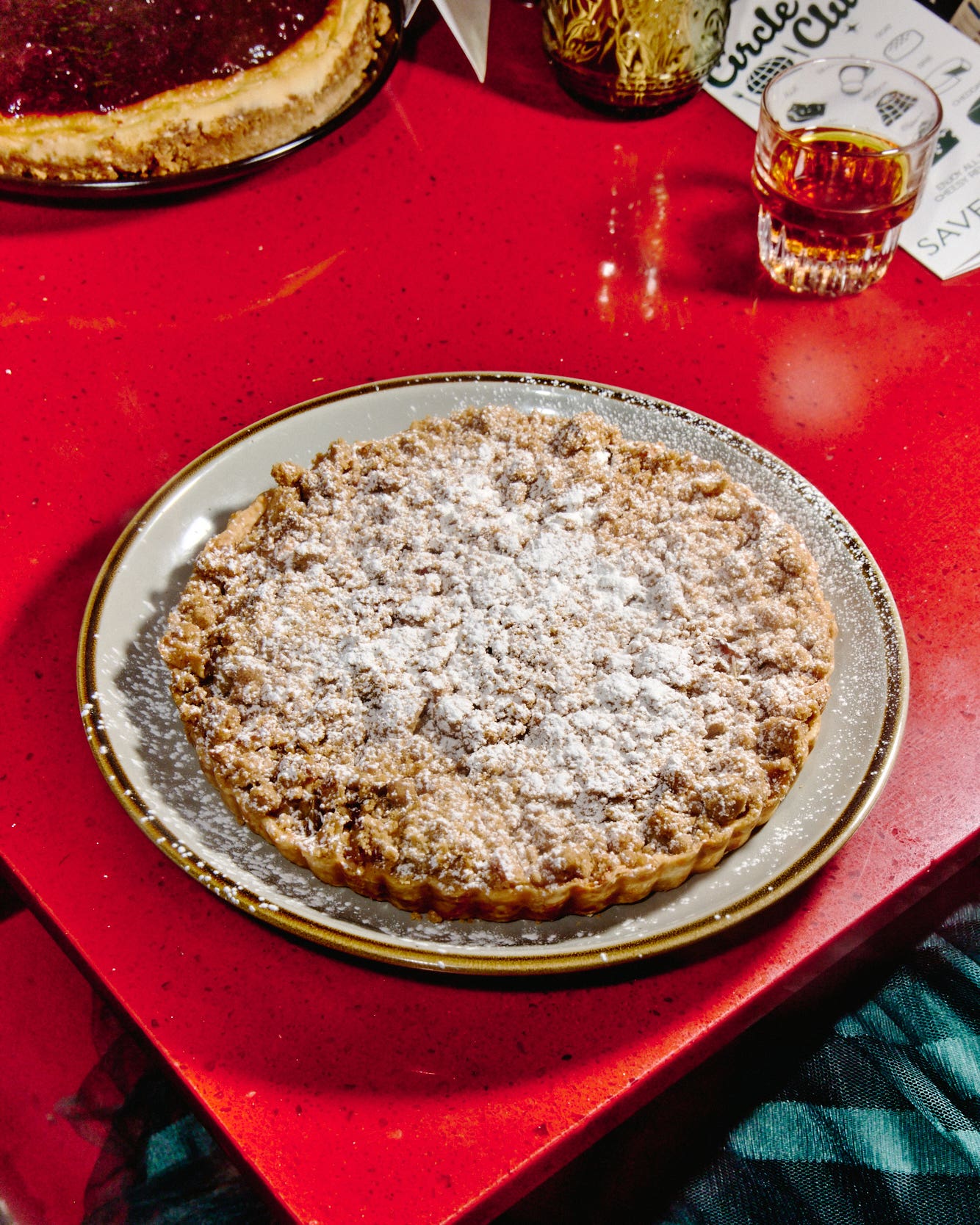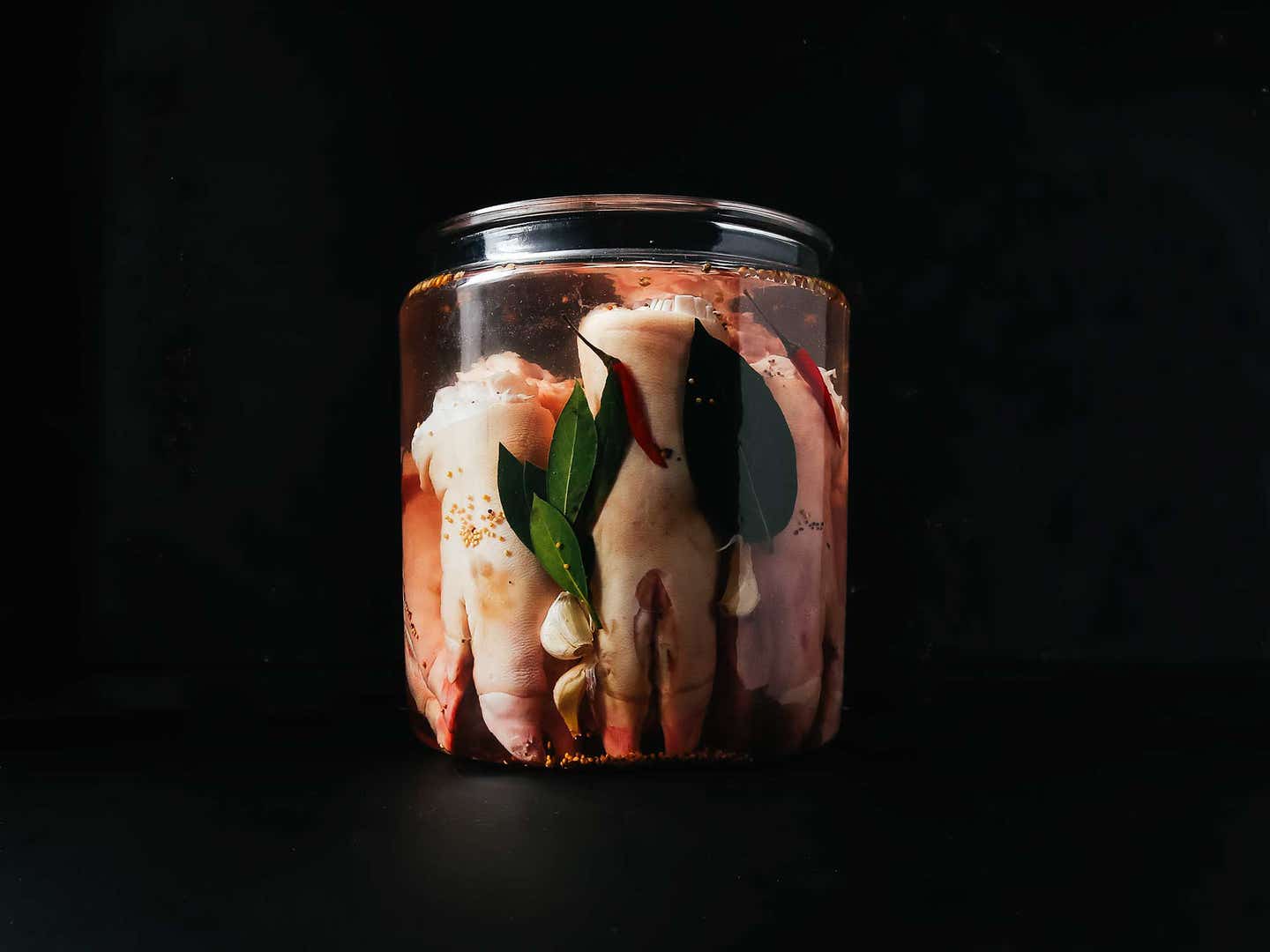
The 27 Recipes We Featured in Our Winter Issue
We did a lot of fermenting and a lot of cheese-eating
This past winter, we had a huge variety of really great recipes, ranging from hearty and heavy to some dishes that had us feeling a bit lighter on our...er, feet. In addition to fermenting everything (no really, everything), we learned about cooking with cheese and some other Greek ingredients in Crete. We pickled trotters to eat alone or sprinkle into a bed of greens, we cooked with lots and lots of sherry, and we learned to love duck fat (ok, we may have already loved duck fat, but still). Below are the 27 recipes we cooked while creating our latest issue.
Short Ribs with Fermented Pepper Harissa
Tangy fermented pepper paste, the base of Burns’ harissa, can be customized to be as sweet or spicy as you prefer. “Mine is usually in the middle,” she says. The sauce can be used immediately, but Burns says the leftovers will continue to improve in taste for up to 6 months and keep indefinitely in the refrigerator. Slow-cooking the short ribs at the oven’s lowest temperature, or in a low-heat dehydrator, ensures that the centers stay medium-rare. And a quick sear on a grill or grill pan delivers crispy edges. Get the recipe for Short Ribs with Fermented Pepper Harissa »
Tangy fermented pepper paste, the base of Burns' harissa, can be customized to be as sweet or spicy as you prefer. "Mine is usually in the middle," she says. The sauce can be used immediately, but Burns says the leftovers will continue to improve in taste for up to 6 months and keep indefinitely in the refrigerator. Slow-cooking the short ribs at the oven's lowest temperature, or in a low-heat dehydrator, ensures that the centers stay medium-rare. And a quick sear on a grill or grill pan delivers crispy edges. Get the recipe for Short Ribs with Fermented Pepper Harissa »
Fermented Squash and Sesame Dip
“This is a nod to tahini dip, done in a way where you also get sweet and sour flavors from fresh and fermented vegetables,” Burns says. “The sesame helps emulsify, and lemon juice, garlic, and spices lend a little acid and heat.” If you have another fermented vegetable on hand, you can substitute all fresh squash and use the lacto-brine from that vegetable in place of or in addition to the lemon juice. Get the recipe for Fermented Squash and Sesame Dip »
"This is a nod to tahini dip, done in a way where you also get sweet and sour flavors from fresh and fermented vegetables," Burns says. "The sesame helps emulsify, and lemon juice, garlic, and spices lend a little acid and heat." If you have another fermented vegetable on hand, you can substitute all fresh squash and use the lacto-brine from that vegetable in place of or in addition to the lemon juice. Get the recipe for Fermented Squash and Sesame Dip »
Fermented Carrot Borscht with Ginger and Turmeric
“Borscht was traditionally a fermented soup,” says Cortney Burns, who adapted the classic beet base to one featuring a combination of fresh and fermented carrots and beets instead. “The warming spices, fresh ginger, and alliums bring out the natural sweet flavor of the carrots,” she says. Burns tops her soup with anything from salt-brined caraway to shredded or wilted vegetables, pickled ginger, dill, or yogurt, but play around with combinations you like. For a red version, use purple or red carrots and red beets. For a yellow version, use yellow carrots and golden beets. Pass the finished soup through a fine-mesh sieve for a completely silky texture. Get the recipe for Fermented Carrot Borscht with Ginger and Turmeric »
"Borscht was traditionally a fermented soup," says Cortney Burns, who adapted the classic beet base to one featuring a combination of fresh and fermented carrots and beets instead. "The warming spices, fresh ginger, and alliums bring out the natural sweet flavor of the carrots," she says. Burns tops her soup with anything from salt-brined caraway to shredded or wilted vegetables, pickled ginger, dill, or yogurt, but play around with combinations you like. For a red version, use purple or red carrots and red beets. For a yellow version, use yellow carrots and golden beets. Pass the finished soup through a fine-mesh sieve for a completely silky texture. Get the recipe for Fermented Carrot Borscht with Ginger and Turmeric »
This wet-brining technique promotes the development of lactobacillus, a bacteria that works to break down sugars into lactic acid, a natural preservative. Over time the vegetables will soften as if being gently cooked and take on a tangy, sour taste. It works best with hearty, durable vegetables (like the carrots and winter squash in the recipes that follow), and less so with fruits or more delicate vegetables. Every few days, check jars for mold and discard if needed. Get the recipe for Base Brine for Fermented Vegetables »
Chia seeds! Lacto-fermented brine! It sounds like hippie food, but these seed crackers are addictive.
The base of these flourless crackers is a mixture of whole and ground seeds. Burns fuses them together by blooming ground flax and chia seeds in the brine from lacto-fermented vegetables to make a natural binding agent. "I do them in a dehydrator at 105 degrees, which keeps them raw and keeps the lactobacillus alive," Burns says. But you can also set your oven to the lowest setting, or, with a gas oven, leave it off and let the pilot light do the work. If they soften or go stale, these crackers can be re-crisped in a low oven or dehydrator as needed. Get the recipe for Seed Crackers with Lacto-Fermented Brine »
Cornmeal is the centerpiece of this polenta-like savory porridge, drizzled with rendered duck fat and topped with crispy fried bits of duck skin. Get the recipe for Gascon Duck-Fat Polenta with Duck-Skin Fritons (La Cruchade)
Gascony's love affair with corn dates back to the 15th century, when it was introduced from the New World by Christopher Columbus and his Basque crew shortly after their return to Spain. Get the recipe for Gascon Duck-Fat Polenta with Duck-Skin Fritons (La Cruchade) »
As the bird steams and braises in a terra-cotta roaster or Dutch oven, it releases its own fat and juices that make a rich sauce with the roasted grapes and shallots. Because it's made in one pot and results in tender, juicy meat every time, this is a perfect duck dish for beginners. Get the recipe for Roast Duck with Shallots and Concord Grapes »
Confit, from the French verb confire, to preserve, is a traditional means of cooking meat slowly in its own fat. Although you may not have access to a whole foie gras duck for rendering, you can create a deeply flavorful confit with good-quality duck pieces and rendered fat bought from a trusted butcher. Get the recipe for Gascon-Style Duck Confit (Confit de Canard) »
Gascon Sourdough Cornbread (Pain de Méture)
Corn is prevalent in Gascony, France, where it’s used to feed the region’s famous foie gras ducks. It’s also the star of this pain de méture, a Gascon cornbread made with sourdough and baked in a cast iron pan. This cabbage-leaf-lined version from New York-based baker Kamel Saci was tested by Saveur contributor Kate Hill, a cook and cooking instructor in the region, who loves the crispy bits of cabbage that sear around the bread’s edges. Saci’s recipe uses a mix of sourdough starter for leavening and acidity and leftover fermented bread dough (pâte fermentée) for added depth of flavor. “I make a basic bread dough with my own sourdough starter, using starter, flour, and water,” Hill says, “My starter was well developed, but I also add a small amount of dried yeast as it’s important to have a vigorous dough to support the cornmeal mix.” For hurried home bakers who might not have several stages of preferments at the ready, Saci suggests substituting a good pre-made dough purchased from your local bread bakery or pizzeria. In France, Hill enjoys her pain de méture with soup, such as a garbure, and also with some Mont D’or cheese. Get the recipe for Gascon Sourdough Cornbread (Pain de Méture) »
Corn is prevalent in Gascony, France, where it's used to feed the region's famous foie gras ducks. It's also the star of this pain de méture, a Gascon cornbread made with sourdough and baked in a cast iron pan. Get the recipe for Gascon Sourdough Cornbread (Pain de Méture) »
Traveling through the lower reaches of Gascony, you will be offered a steaming bowl of garbure to begin almost every lunch and dinner. Warming, hearty, and satisfying with large chunks of sweet winter roots, cabbages, and onion, garbure is the way the French balance the heavier meat and starch courses inevitably to follow. Locals here typically enrich the broth by stirring it with a leg of duck confit, then adding the shredded meat at the end, or with the addition of a few chunks of ham. Get the recipe for Hearty Vegetable Stew with Duck Confit and Cabbage (Garbure Gasconne) »
Rather than using the traditional dash of blood often used in a civet, Kate Hill uses a few squares of dark chocolate. The deep purple prunes from Agen, France, lend a luxurious texture and sweetness to the duck legs. Get the recipe for Wine-Braised Duck Legs with Agen Prunes (Civet de Canard Aux Pruneaux D’Agen)
Many years ago, I learned a classic civet of duck cooked in a rich wine and blood sauce from the most wonderful female cooks in the Lot-et-Garonne, chef Marie-Claude Garcia of La Belle Gasconne restaurant and my dear friend Vétou Pompèle. They taught me to always "cook" the wine lightly by lighting it on fire before adding the meat and aromatics to simmer. Get the recipe for Wine-Braised Duck Legs with Agen Prunes (Civet de Canard Aux Pruneaux D'Agen) »
While this marriage of artichokes and Sanlúcar prawns (called langostinos locally) in a fino sauce tastes like a timeless classic from the Sherry Triangle, it was created recently by young chef Javier Munoz at La Carboná, the restaurant owned by his parents in Jerez de la Frontera. The restaurant's motto is "Cocina con Jerez" (cooking with sherry), and Munoz, who worked previously at El Celler de Can Roca, concocted this appetizer as the ideal accompaniment to briny, nutty amontillado. Get the recipe for Marinated Artichokes with Prawns and Fino Sherry (Alcachofas Salteadas con Langostinos y Fino) »
Equipo Navazos' Jesús Barquín ritualistically enjoys scouring the fresh fish market in Sanlúcar de Barrameda for the area's incomparable shellfish. He cooks mantis prawns, langostinos, and clams and their sweet and salty juices into fideos, Spain's national noodle, a short vermicelli. The dish is reminiscent of paella, but a hefty portion of the liquid used is dry fino sherry. Watch the noodles at the bottom of the pot for burning; unlike paella, you don't want a crispy edge. Get the recipe for Spanish Vermicelli Noodles with Prawns, Cockles, and Squid (Cazuela de Fideos con Mariscos) »
For Equipo Navazos' Eduardo Ojeda, a classic Sunday meal is pork cheeks (carrilleras) slow-braised in beef stock, rich and oxidative palo cortado, and a pool of olive oil. The excess oil helps keep the relatively lean cut of meat tender as it simmers. Ojeda suggests pairing the dish with a young amontillado. Get the recipe for Braised Pork Cheeks with Palo Cortado Sherry (Carrilleras Estofado con Palo Cortado) »
This regional dish uses the same rice and many of the same techniques as paella—and whatever wild gamebirds are in season. Jan Peterson, owner of the Fernando de Castilla bodega and a collaborator with Equipo Navazos, cooks his on a campero, an outdoor gas range popular in the Spanish countryside. Get the recipe for Saffron Rice with Partridges and Amontillado Sherry (Arroz con Perdiz) »
Considered one of the finest forms of Spanish charcuterie, lomo embuchado — a dry-cured pork tenderloin dusted with pimenton, wrapped, and set to cure for two months or more — is meaty, lean, and intensely flavorful. Served sliced thin to enhance the enjoyably chewy texture, it’s at its best paired with something fruity, fatty, or both: drizzled with olive oil, or eaten in the same bite as an olive or piquillo pepper.
Acorn-fed pata negra lomo, a salty, dry-cured Spanish pork loin, is delicious on its own. But chef Israel Ramos, of Restaurante Albalá, makes a case for its tartare-ization. The lomo is best cut into tiny cubes with a very sharp knife, and the dish best eaten alongside fino or manzanilla, ideally en rama. Get the recipe for Iberian Cured Pork Lomo Tartare »
You can find Andalusian potato-tuna salads like this offered at any café or bar in Jerez, served at most hours of the day and night. Eduardo Ojeda of Equipo Navazos likes to make the dish as the starter course for family meals at home. He uses tuna belly preserved in olive oil, tins of which are sold in Spain as ventresca de atún claro. He also adds a serious quantity of olive oil, never measuring exactly. Just when you think you've added too much oil, he recommends adding a healthy flourish more. Serve with fino, ideally from Macharnudo vineyard. Get the recipe for Spanish Potato Salad with Tuna (Papas Aliñas) »
Cretan Bean Stew with Spinach
Dark leafy greens are the predominant vegetables in Crete, where more than 100 types grow and they are often paired with beans in sautés, stews, and pies. Get the recipe for Cretan Bean Stew with Spinach »
Dark leafy greens are the predominant vegetables in Crete, where more than 100 types grow and they are often paired with beans in sautés, stews, and pies. To make this rustic, lightly sweet side dish to accompany his meat and cheese dishes, Trilirakis uses manaroli, a legume similar to a chickpea but with a characteristic black spot. You can cook the beans up to a few days ahead of serving; store in fresh water in the refrigerator. Get the recipe for Cretan Bean Stew with Spinach »
Roasted Goat with Potatoes and Onion
Goat’s milk is used widely in local cheeses. But this simple dish from Stelios Trilirakis of Dounias restaurant represents a traditional Cretan preparation of the meat, slow-roasted for hours in a clay pot over a wood-fired oven. Get the recipe for Roasted Goat with Potatoes and Onion »
Goat's milk is used widely in local cheeses. But this simple dish from Stelios Trilirakis of Dounias restaurant represents a traditional Cretan preparation of the meat, slow-roasted for hours in a clay pot over a wood-fired oven. You can achieve equally tender meat and crisp edges using a heavy, covered pot. Get the recipe for Roasted Goat with Potatoes and Onion »
This milky vegetable casserole from Crete is sprinkled with a cracked wheat topping for a little crunch.
This milky, soft-cooked vegetable casserole is sprinkled with a granola-like wheat topping called ksinohontros, from the Cretan words meaning sour (ksino) and large chunks (hontros). It was traditionally made by cooking cracked wheat in soured milk, then drying and crumbling it. Stelios Trilirakis uses fresh milk from his animals and dries the pieces directly in the sun, but an hour in a low oven does the trick. Get the recipe for Broccoli and Cauliflower Casserole with Cracked Wheat Topping »
Sarikopitakia (fried mizithra cheese pastries)
These savory fried cheese pies are named for their spiral shapes. Sariki, a Turkish word meaning “turban,” is also the name of a traditional headdress still worn by Cretan men at celebrations. Get the recipe for Sarikopitakia (fried mizithra cheese pastries) »
These savory fried cheese pies are named for their spiral shapes. Sariki, a Turkish word meaning "turban," is also the name of a traditional headdress still worn by Cretan men at celebrations. Tsikoudia, a grape-based spirit from Crete, is used in the dough, likely for making it easier to roll out into thin sheets. Get the recipe for Cretan Fried Cheese Pastries (Sarikopitakia) »
Cretan Cheese Pies with Thyme and Honey (Kalitsounia)
These traditional Cretan handheld cheese pies are often served as an Easter treat. Get the recipe for Cretan Cheese Pies with Thyme and Honey (Kalitsounia) »
These local hand pies are often served around Easter. Made with a country-style phyllo, which is less flaky and slightly thicker than classic versions of the dough, they can be found either baked or fried and filled with many different types of mild local sheep and goat cheeses. This recipe for a baked version features mizithra and tiromalama cheeses, but others may use malaka or anthotyro. A good substitute is a mixture of feta and ricotta salata. Get the recipe for Cretan Cheese Pies with Thyme and Honey (Kalitsounia) »
In Crete, boureki is a rich, layered dish typically consisting of potatoes and squash, often topped with a generous amount of cheese before baking. Boureki may be eaten at room temperature, but it is especially irresistible when the cheese is still warm. Get the recipe for Layered Pumpkin and Cheese Gratin Squares (Boureki) »
After testing and adapting author and culinary instructor Kate Hill's recipes for "In French Gascony, Duck Fat Is King", we found ourselves with a glut of beautiful white-gold duck fat. Since we could only fry so many eggs and potatoes in the stuff, we turned to Ariane Daguin, the Gascon-born head of boutique meat purveyor D'Artagnan, for more ideas. Daguin will often use the slightly funky flavor of the fat to reimagine baked goods. Get the recipe for Duck-Fat Shortbread Cookies »
At the Glade Hill Cannery in Franklin County, Virginia, master canner Ronald David helps his neighbors process local heritage apples—like tart, vinous Staymans—into dense, jammy apple butter (see "A Living Larder"). The concentrated natural sugars, which turn the apple butter a deep chestnut color, also help to preserve it. David also stresses the importance of adding salt, which cuts through some of the natural sweetness of the cooked apples. Virginians traditionally pair apple butter with soufflélike cornmeal-batter bread for breakfast, but in the Test Kitchen, we love it on ham sandwiches or as part of a cheese plate. Get the recipe for Apple Butter with Cinnamon and Cloves »
Braised Collard Greens with Pickled Trotters
While you can use store-bought trotters in this dish, we pickled our own, which add a similar kick of acidity and deep hammy flavor. Get the recipe for Braised Collard Greens with Pickled Trotters »
While you can use store-bought trotters in this dish, we pickled our own, which add a similar kick of acidity and deep hammy flavor. Get the recipe for Braised Collard Greens with Pickled Trotters »
Natural gelatin released by pig's trotters during cooking gives them a jellied consistency. In Creole cuisine, they were traditionally served chilled as an hors d'oeuvre or battered and fried like chicken. While trotters do not contain a lot of pure meat, their skin and cartilage are edible and—once pickled—loaded with tart, porky flavor. The silky pickings from one or two make an excellent addition to beans or braised greens, like the delicious sweet and sour collards Chef Jean-Paul Bourgeois makes at his restaurant Blue Smoke in New York City. Get the recipe for Spicy Creole Pickled Pig's Trotters »
Keep Reading
Continue to Next Story
